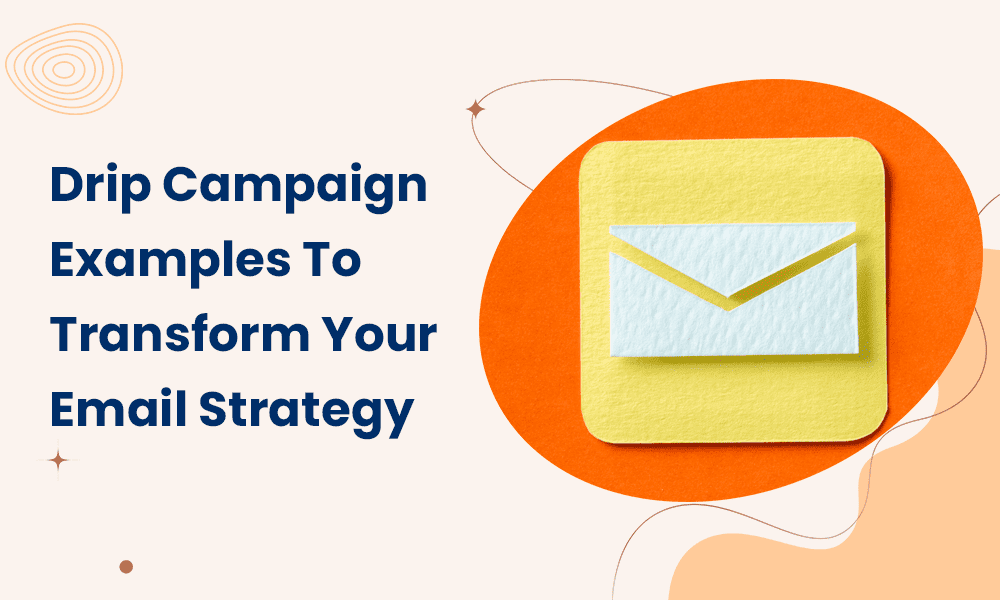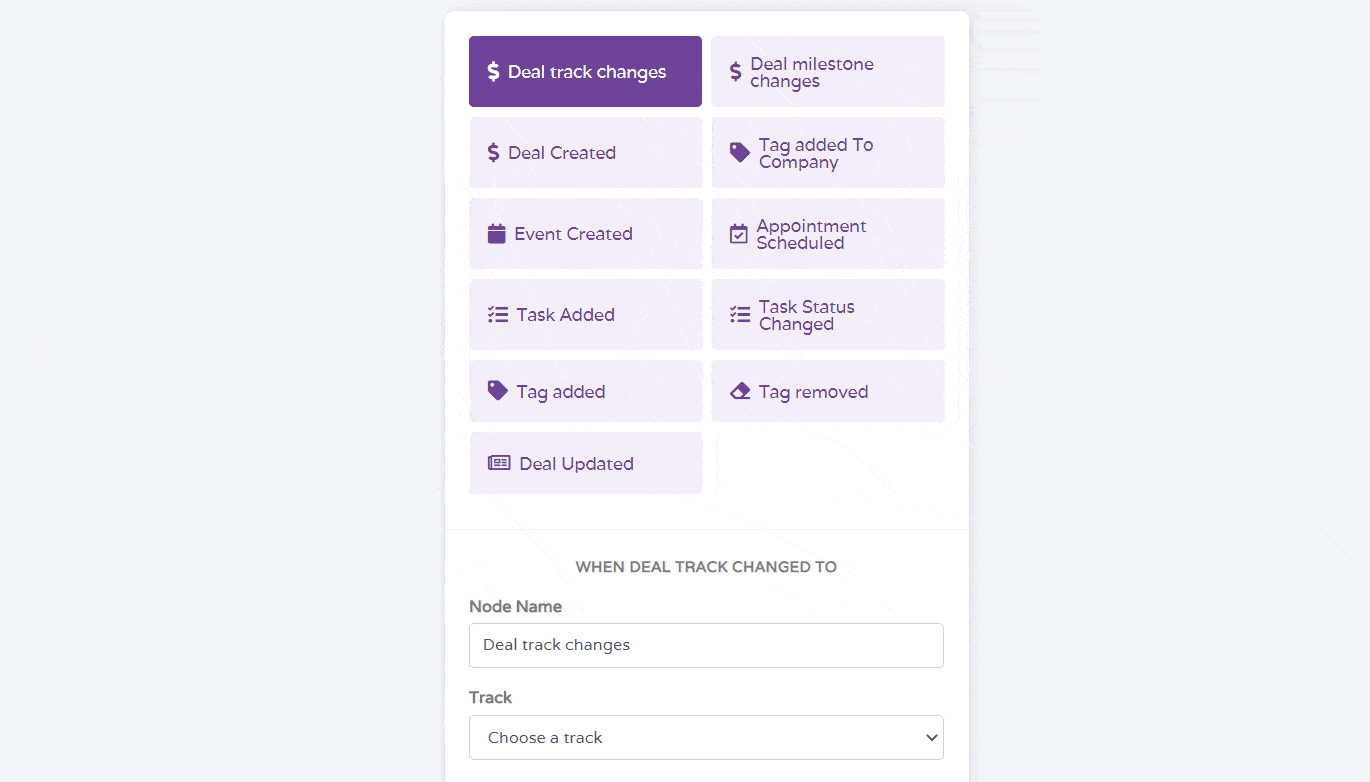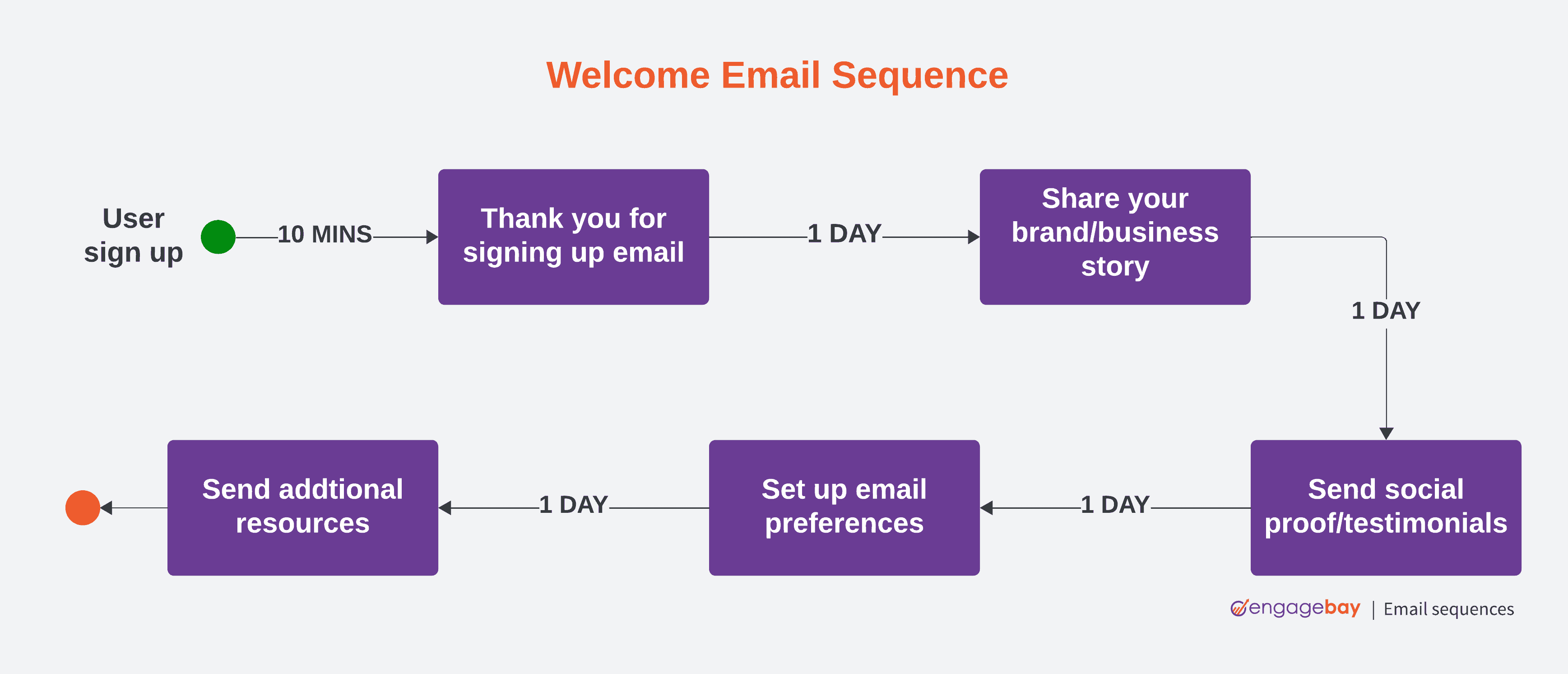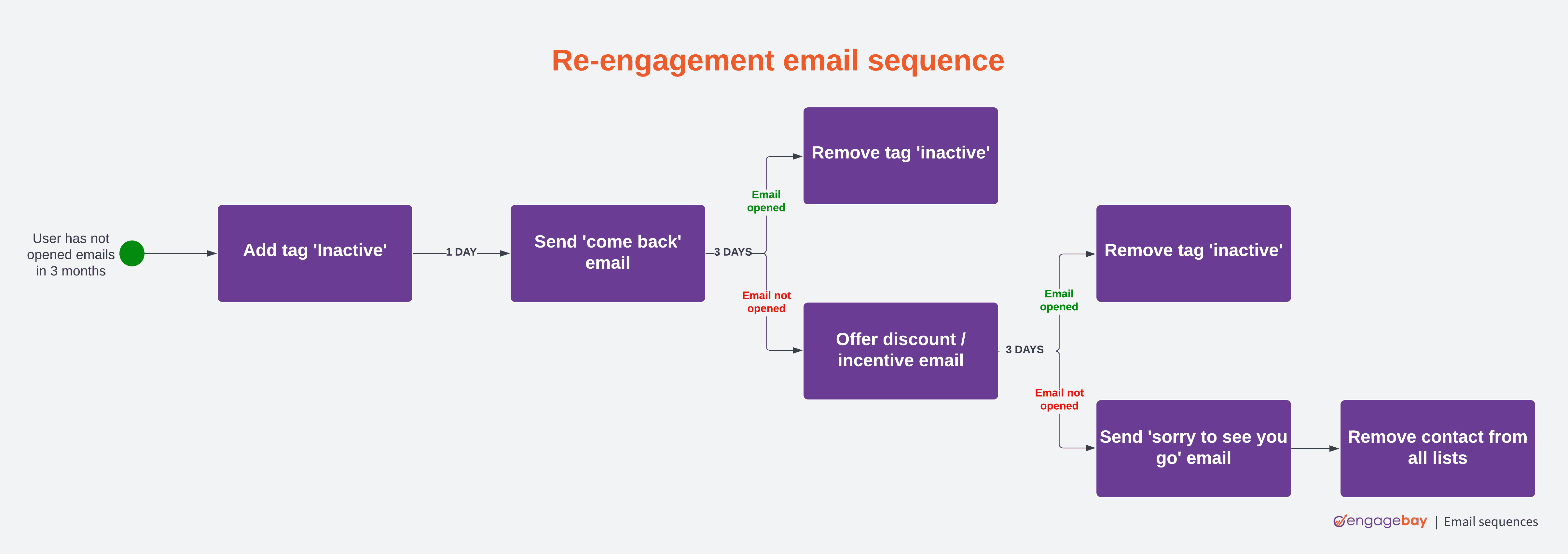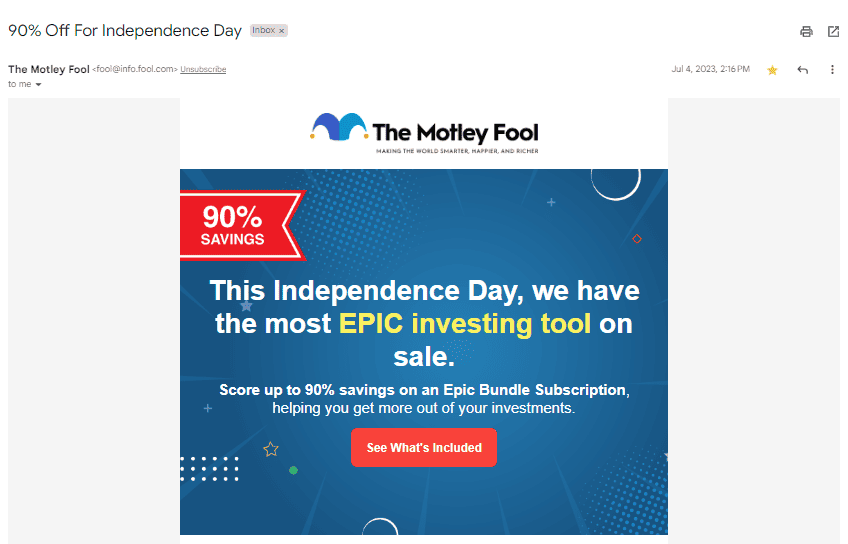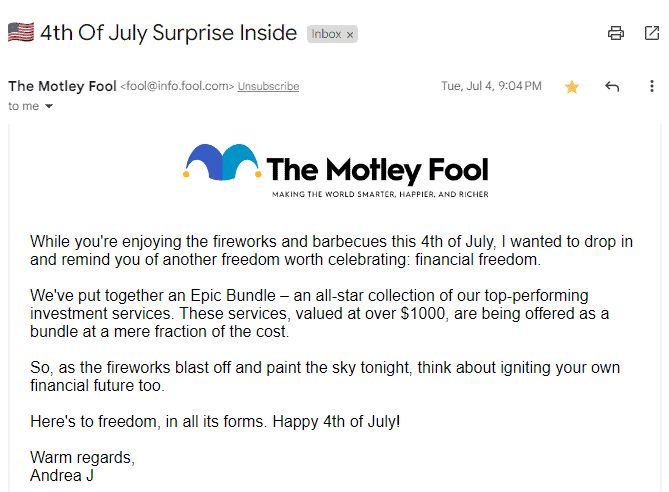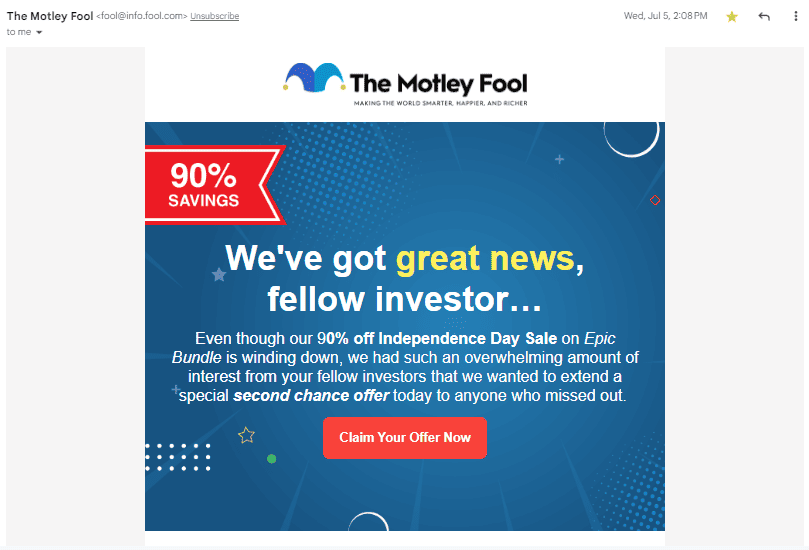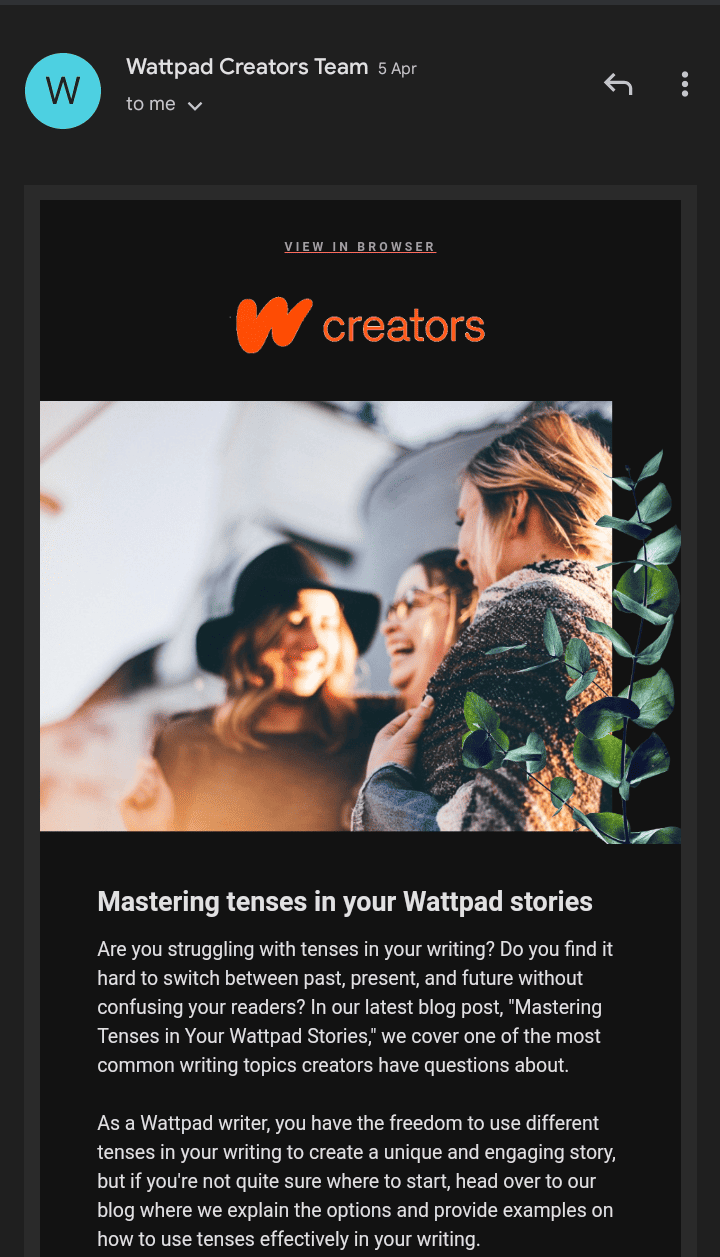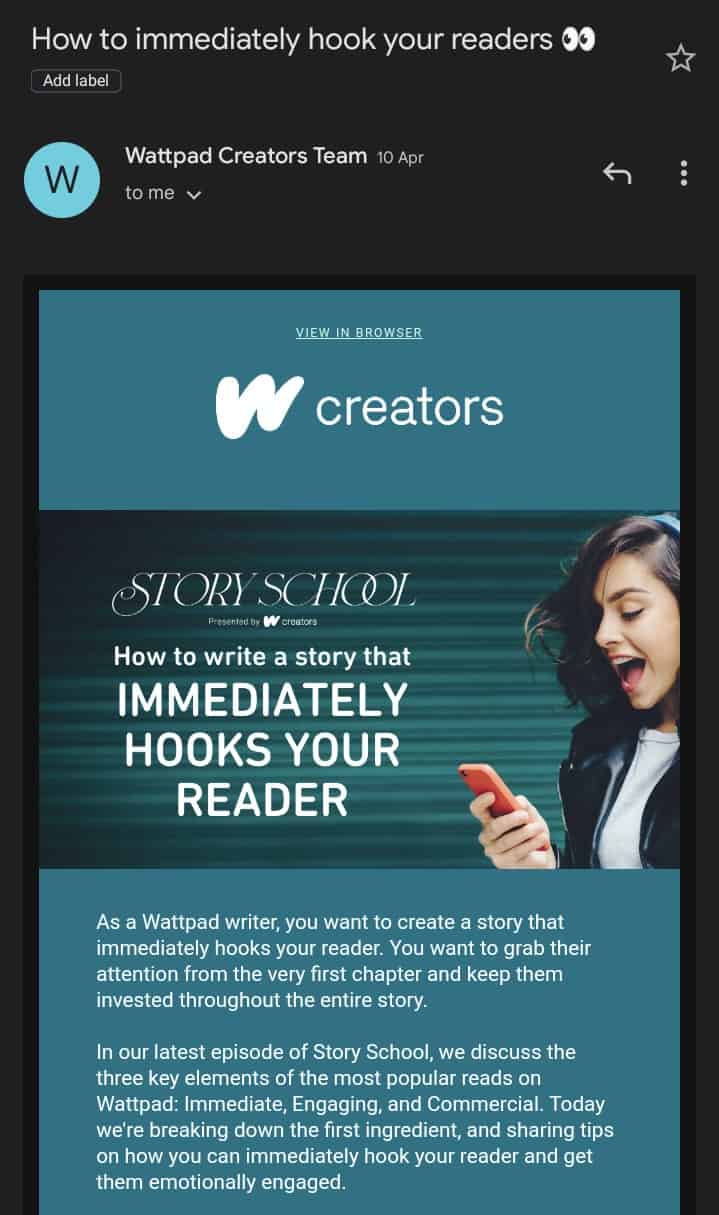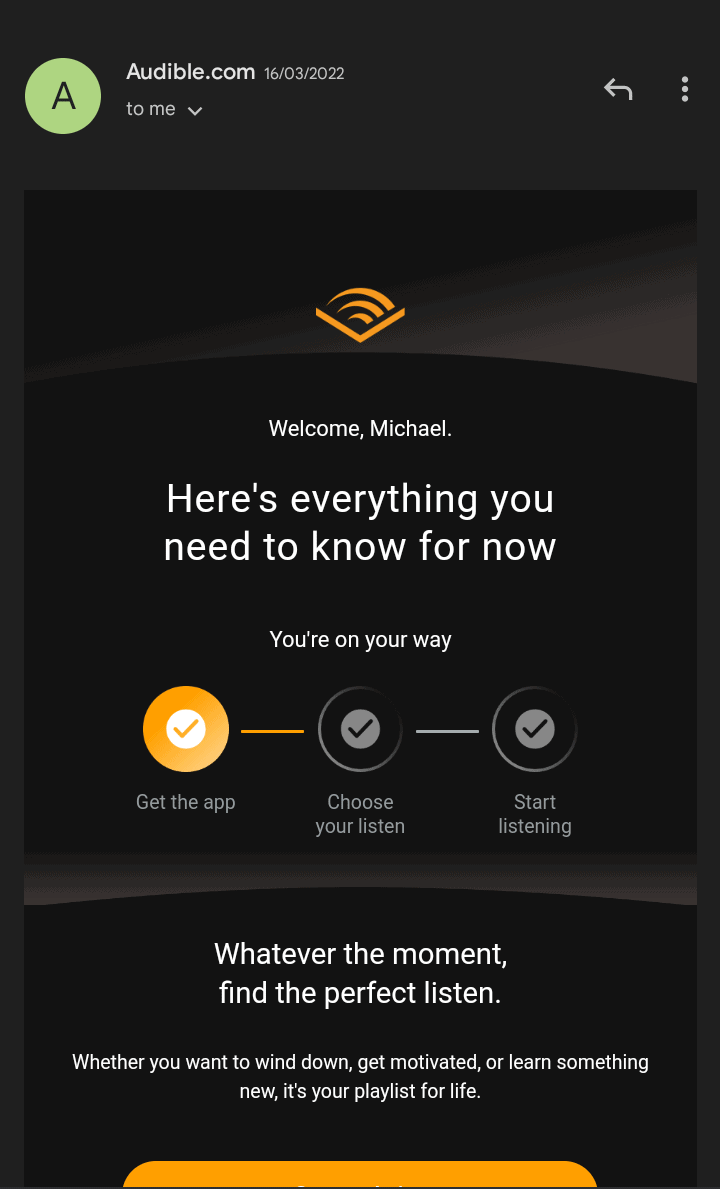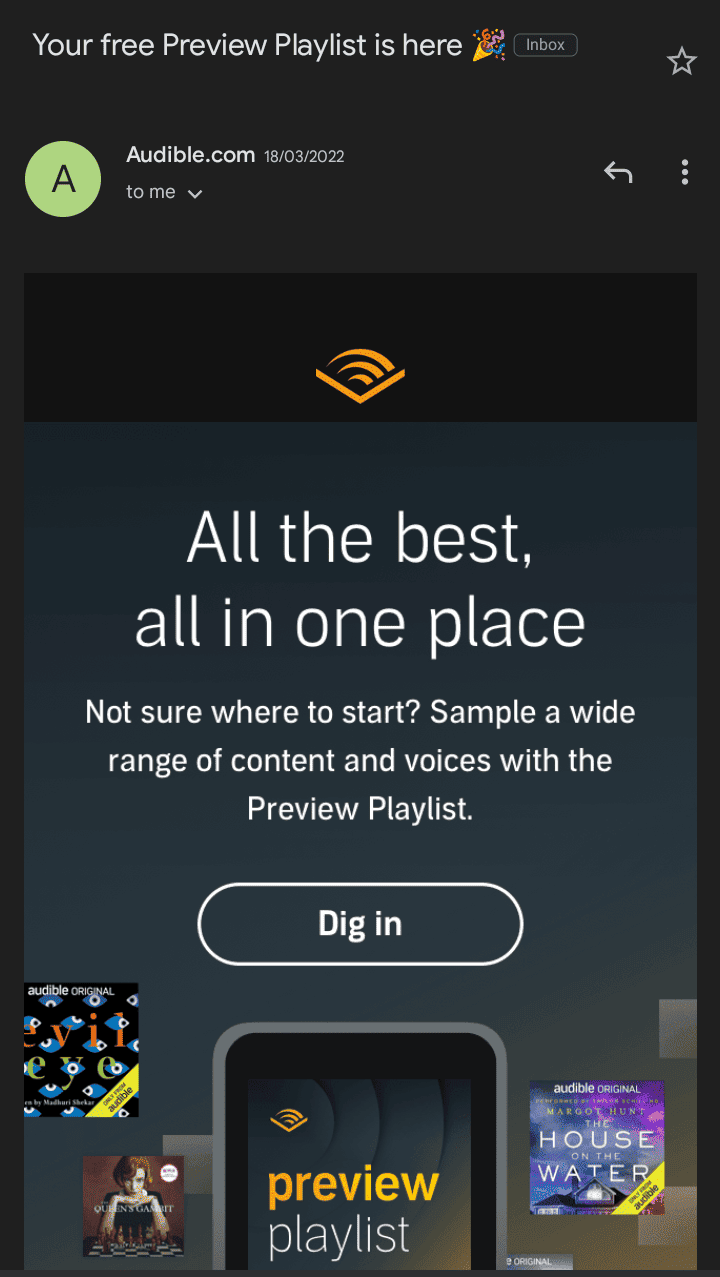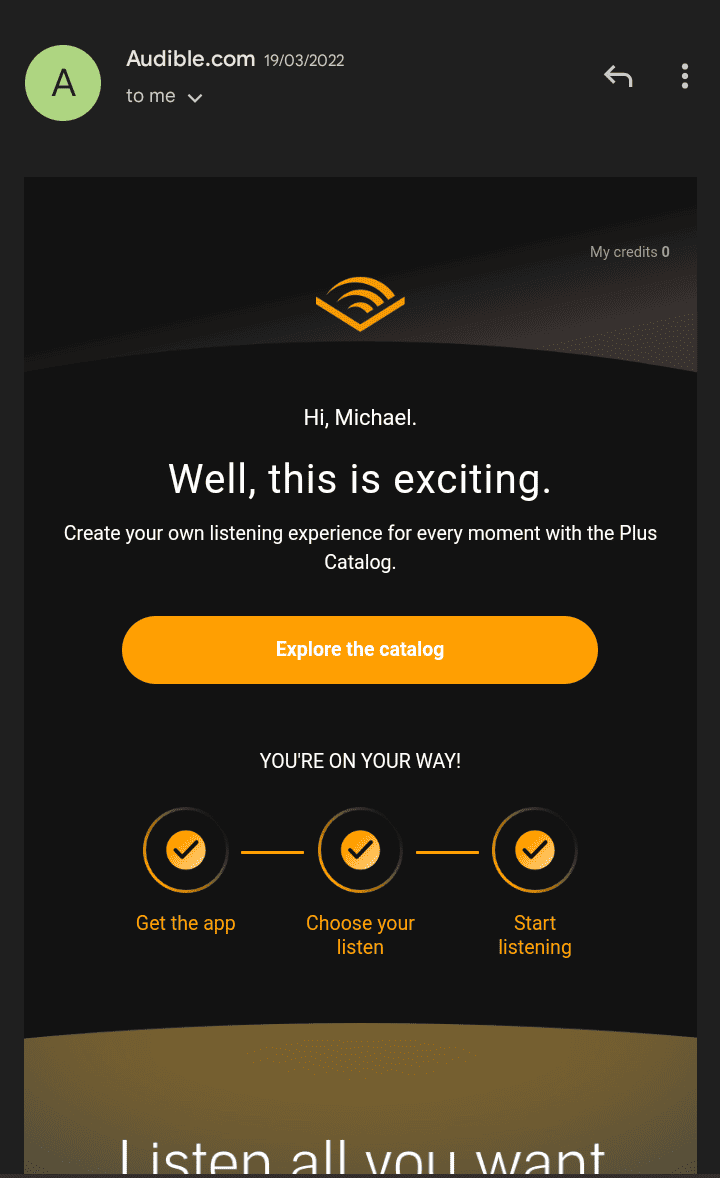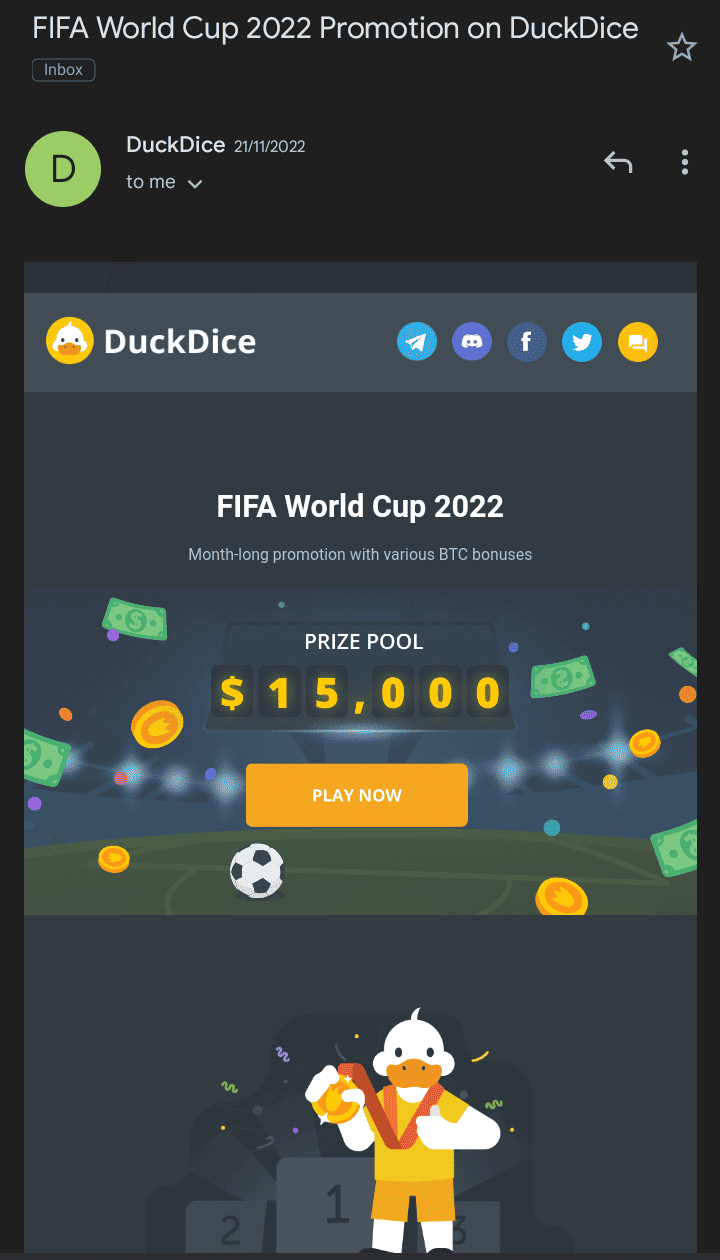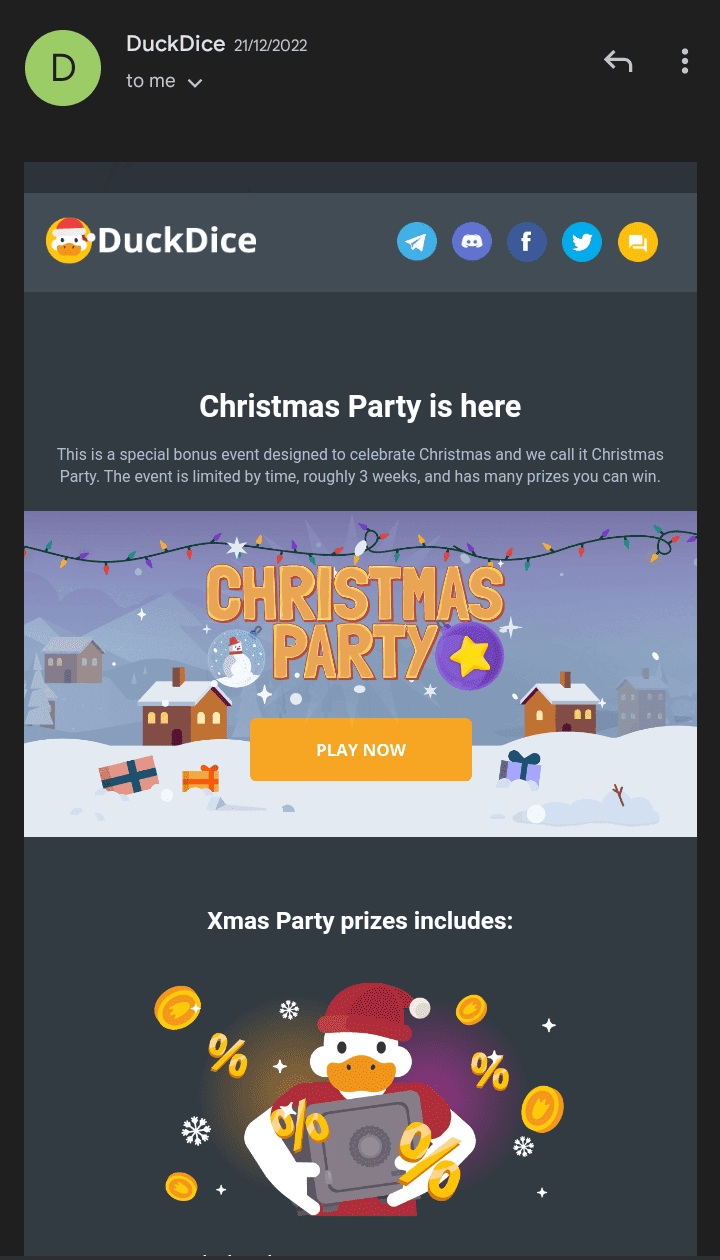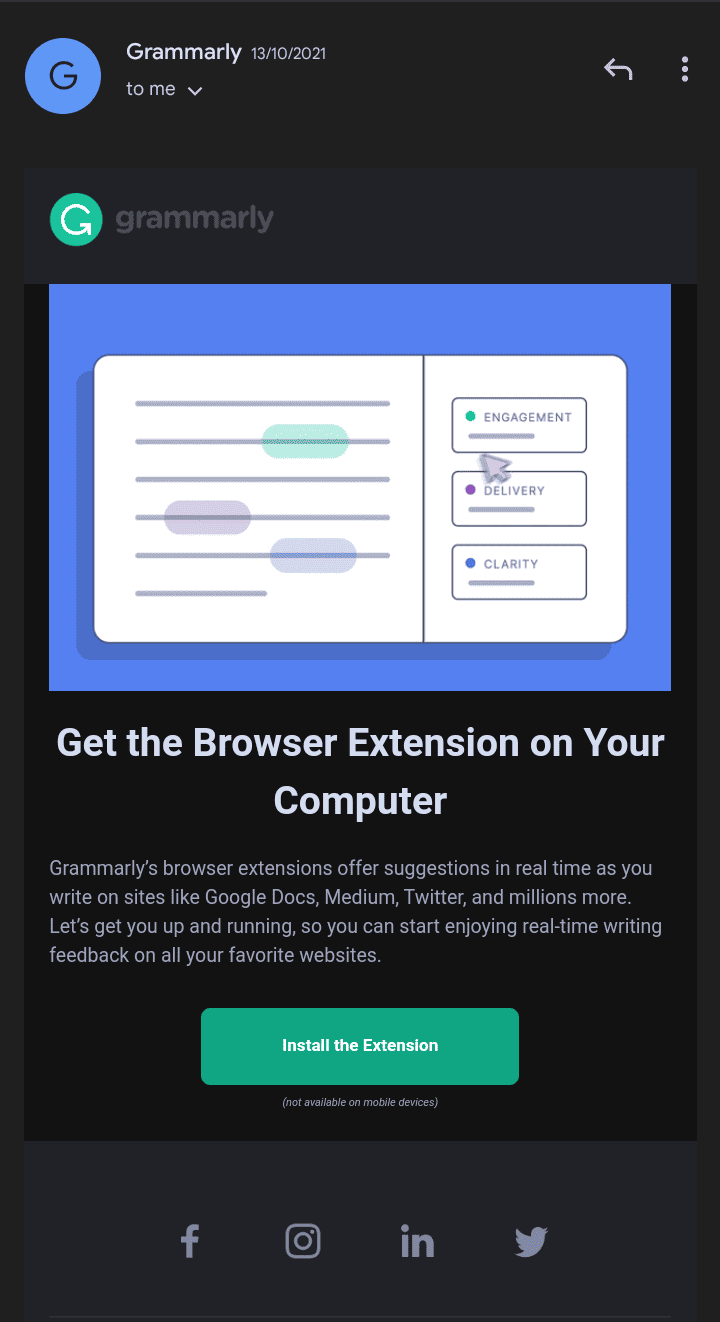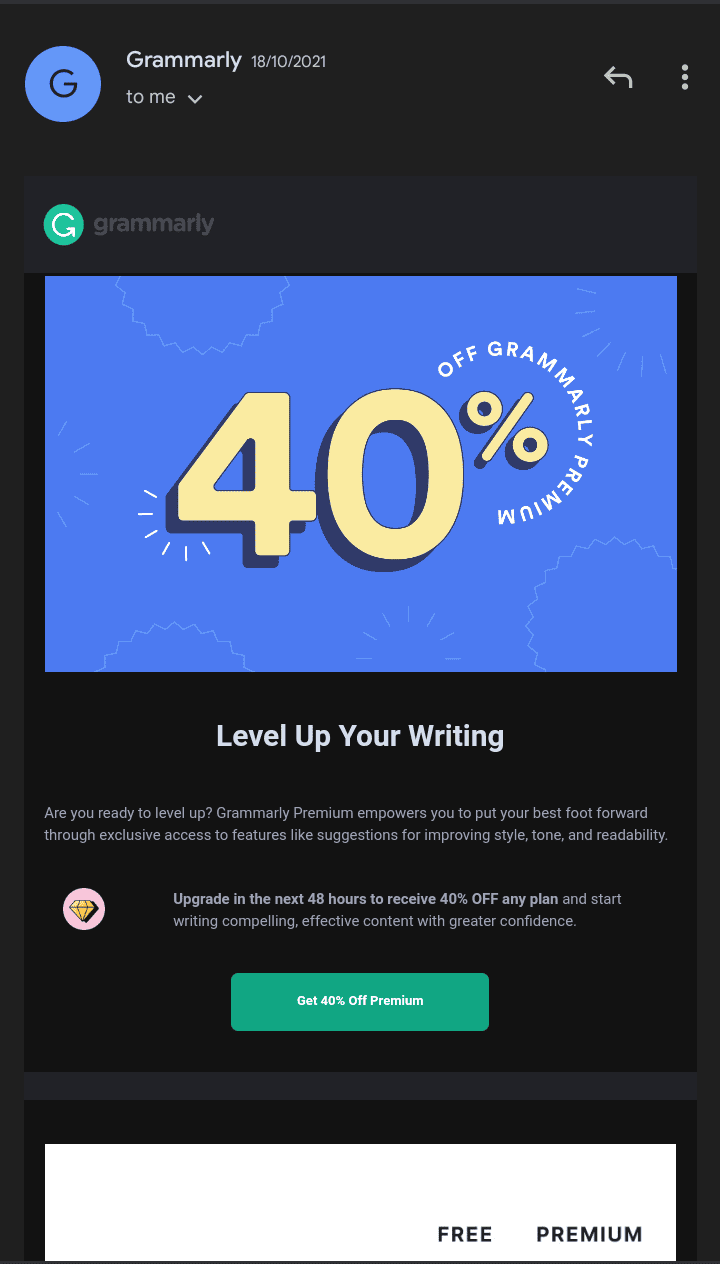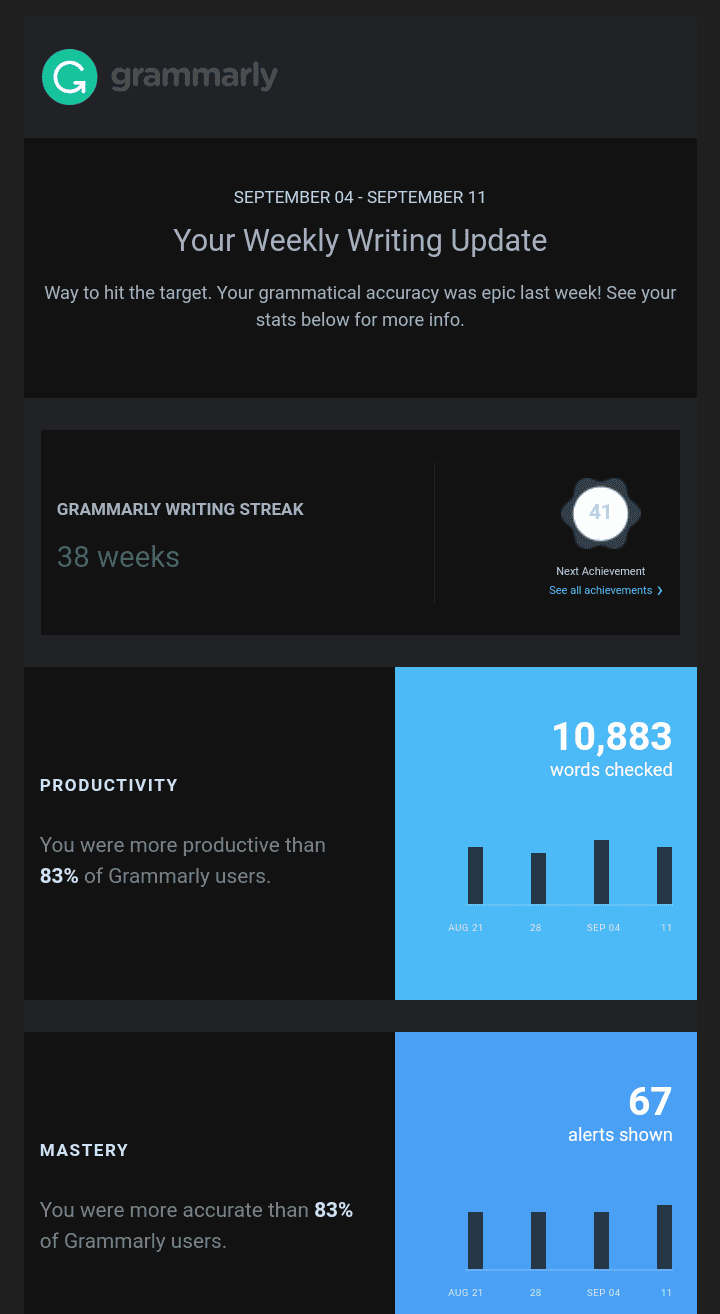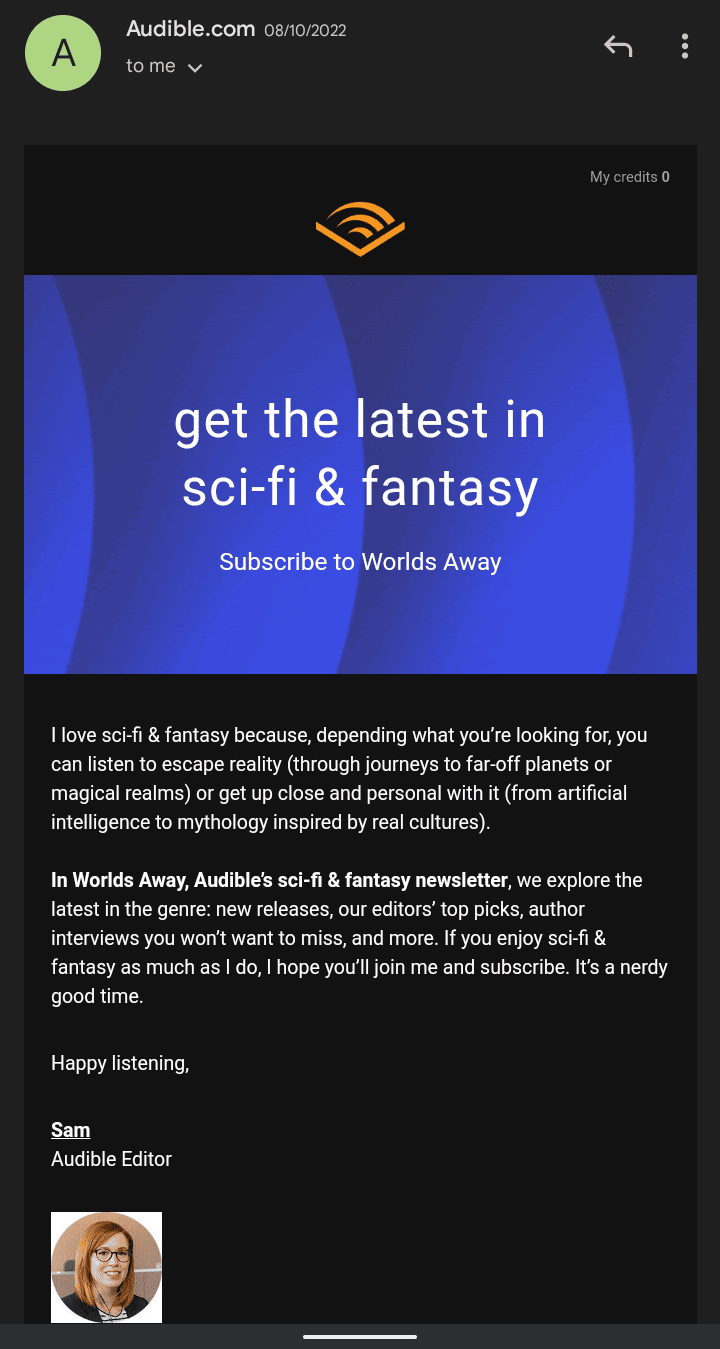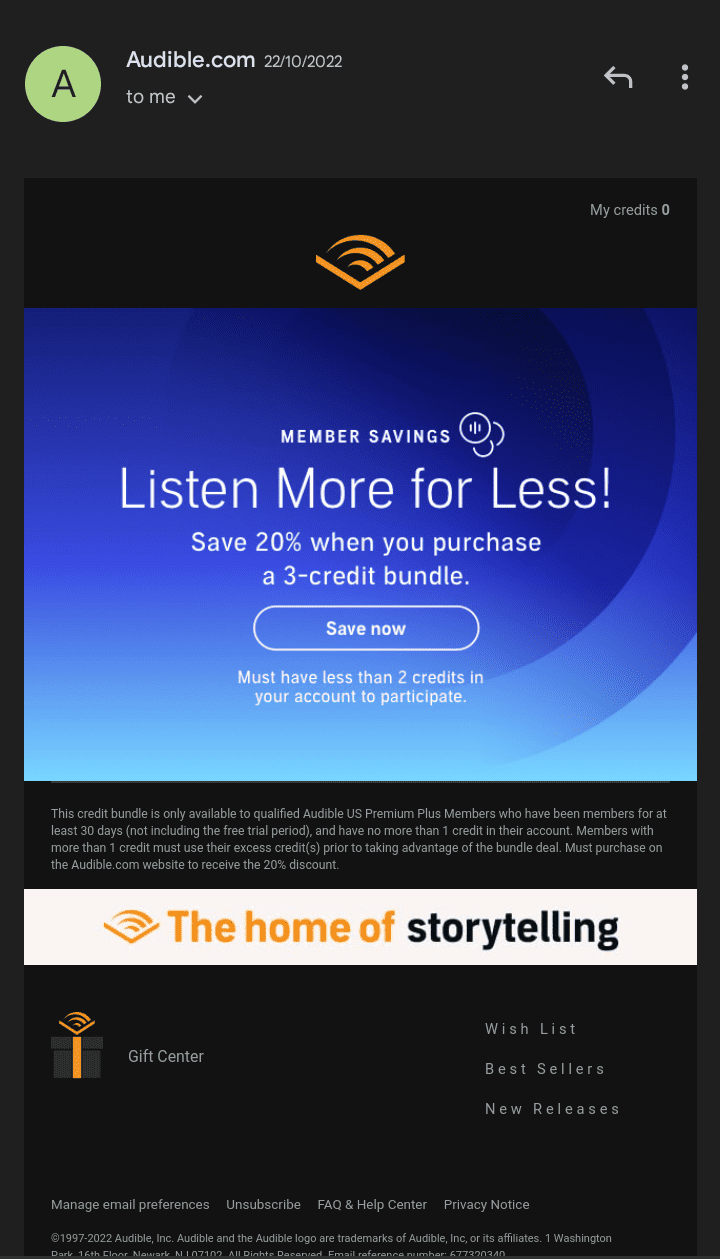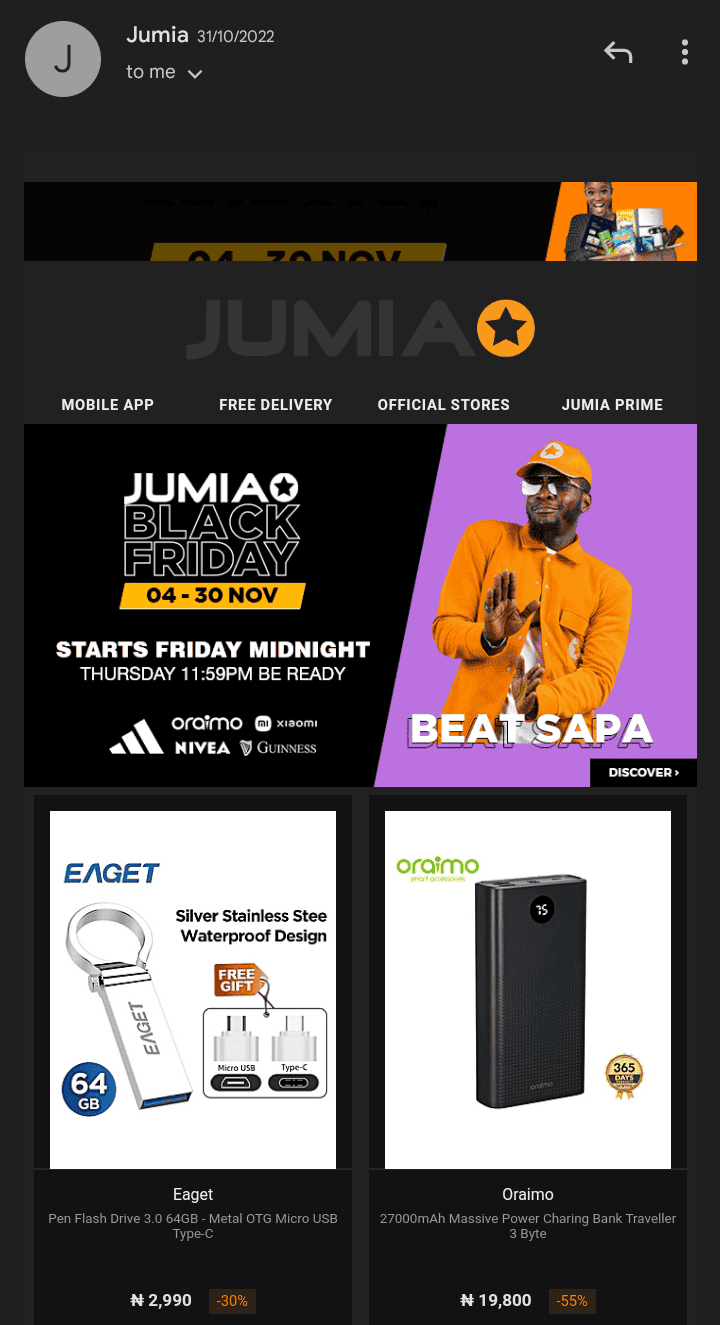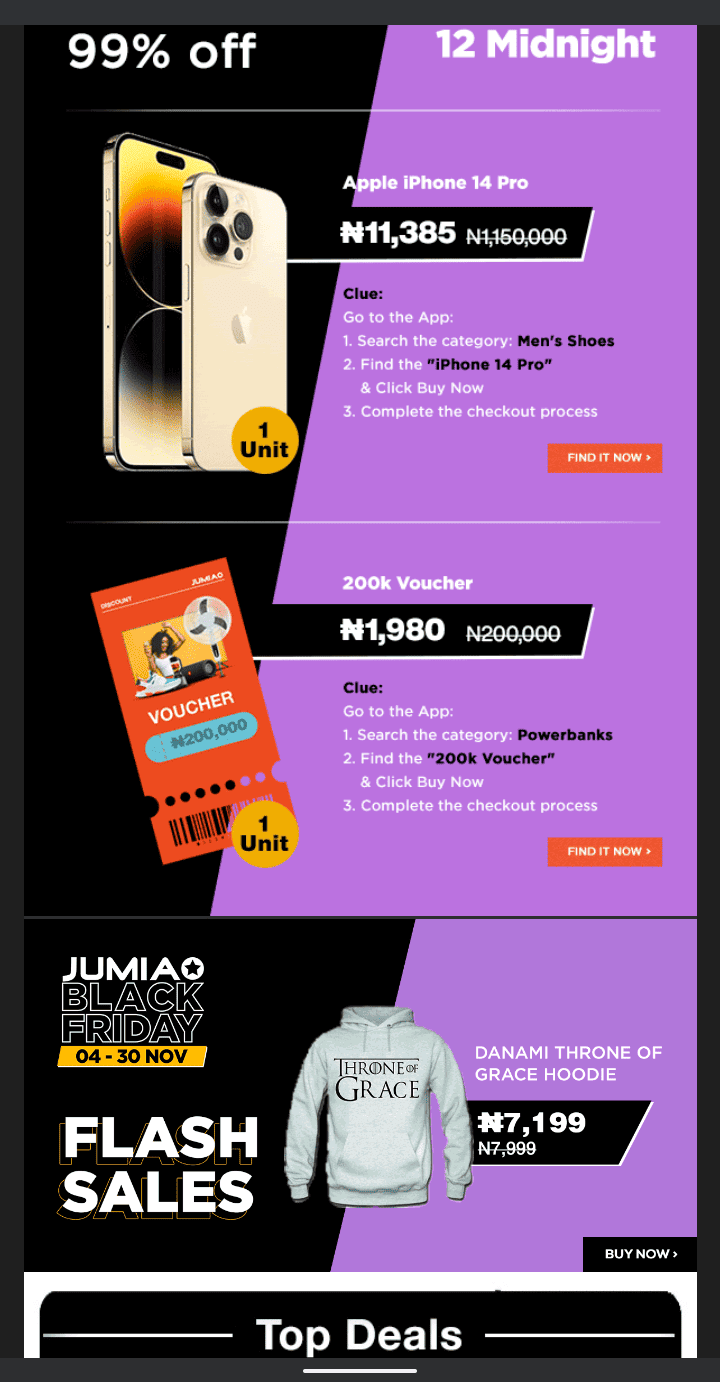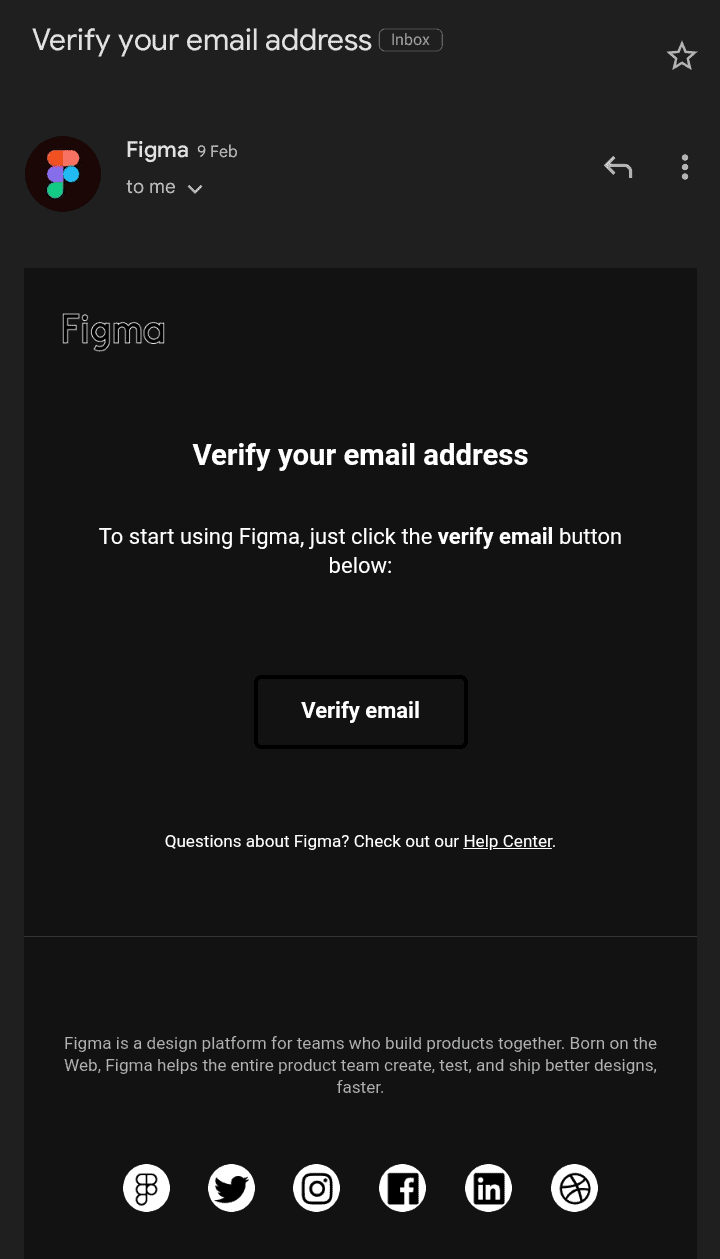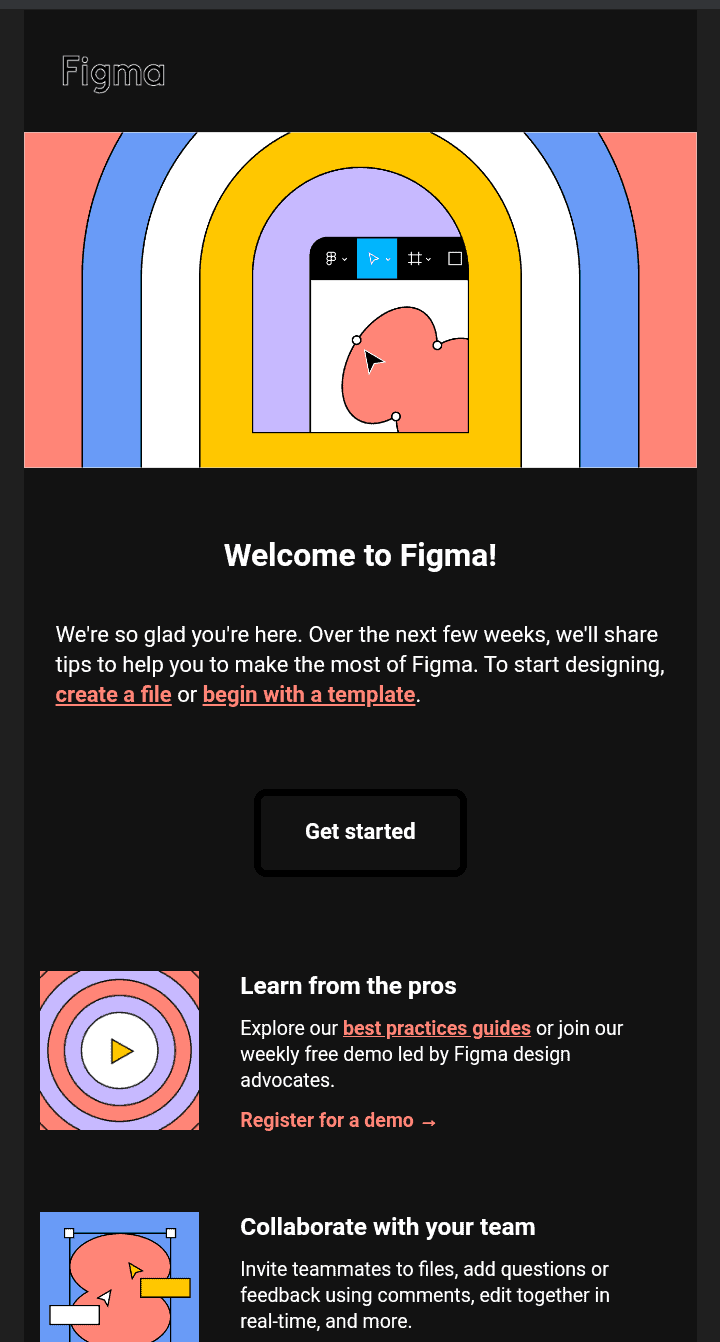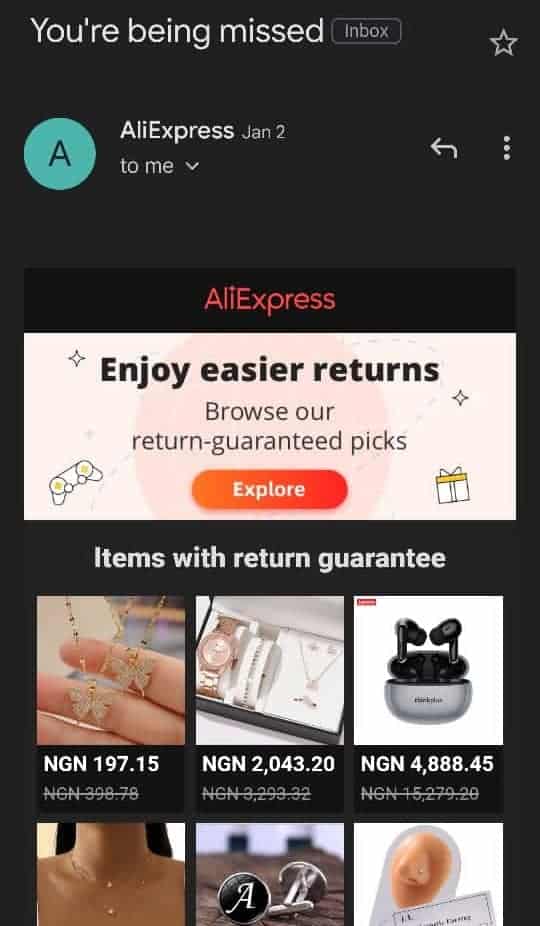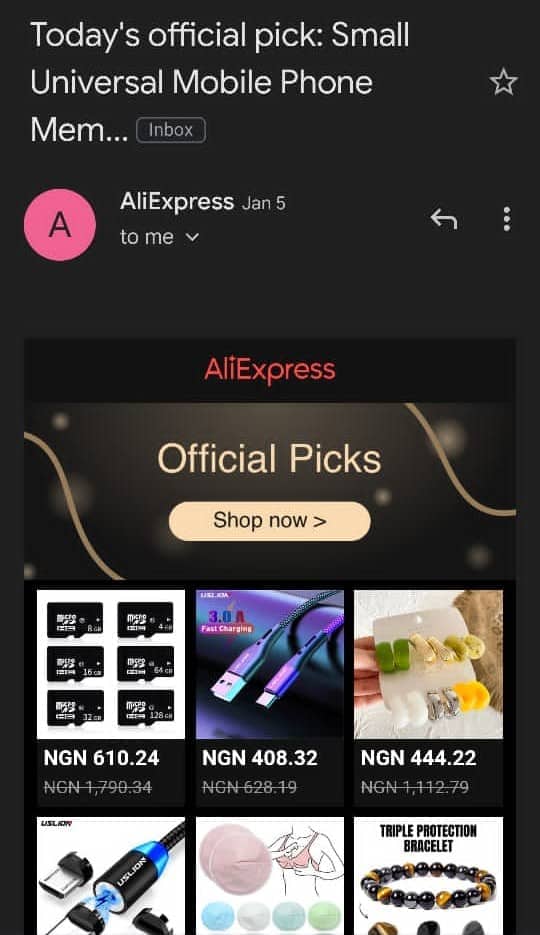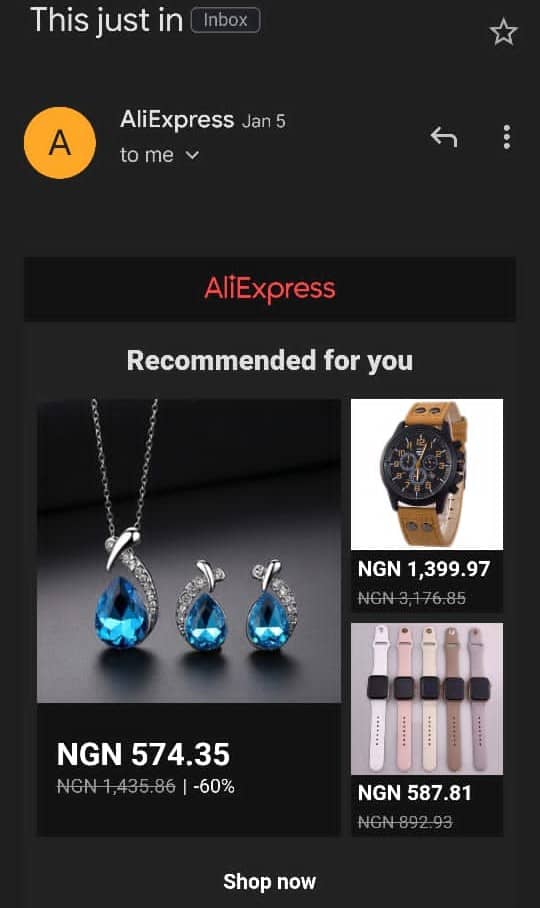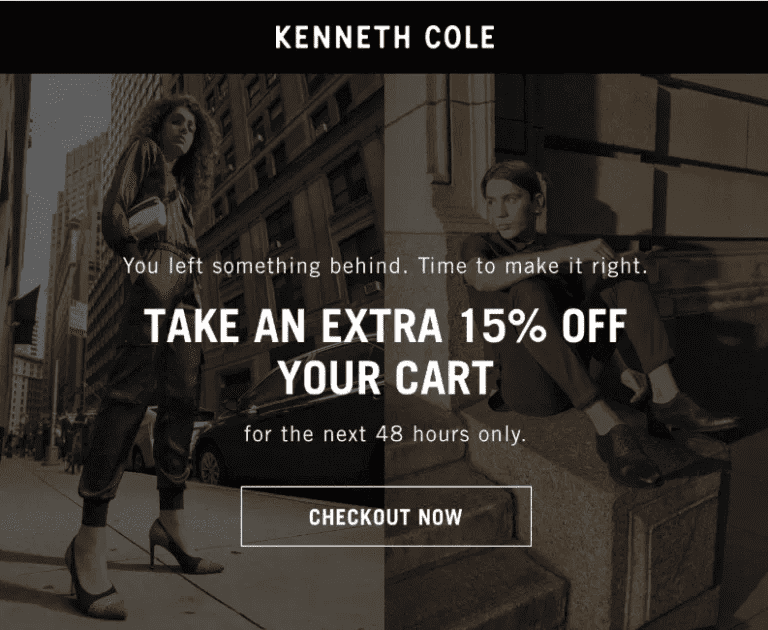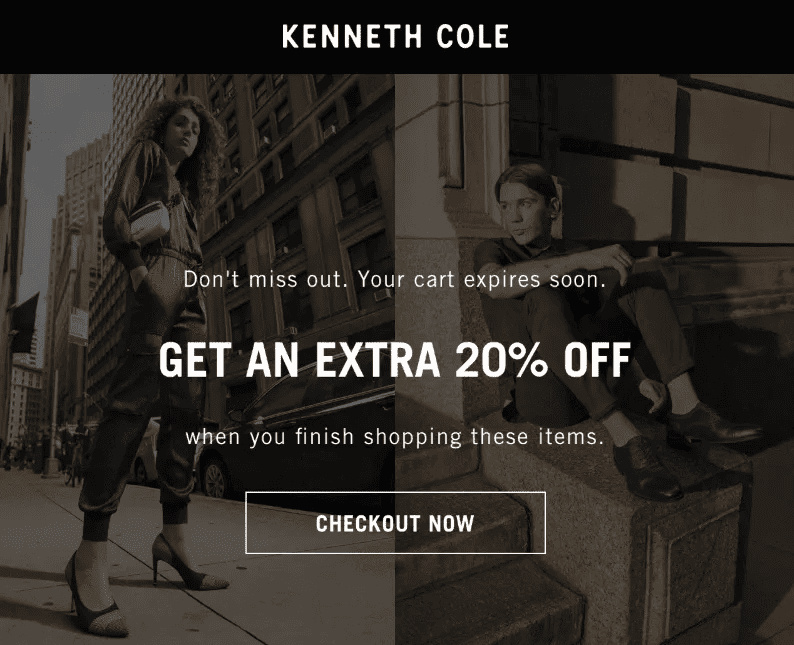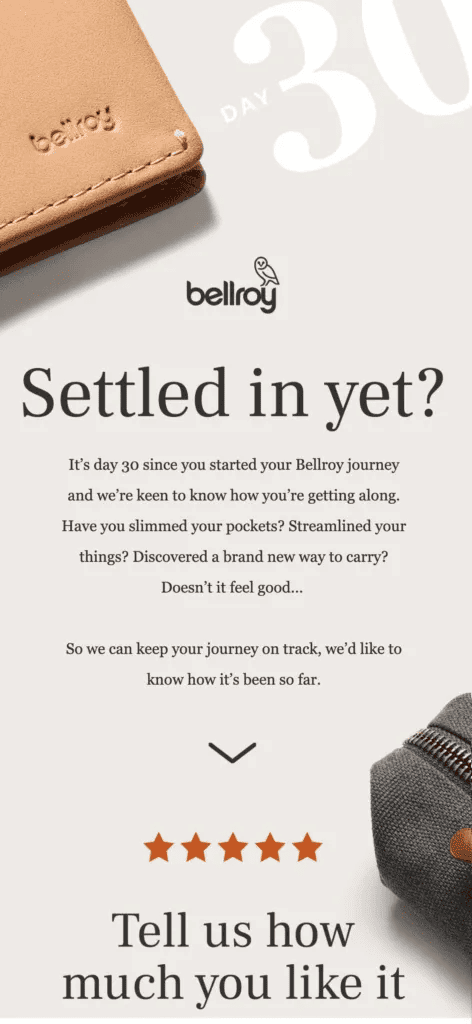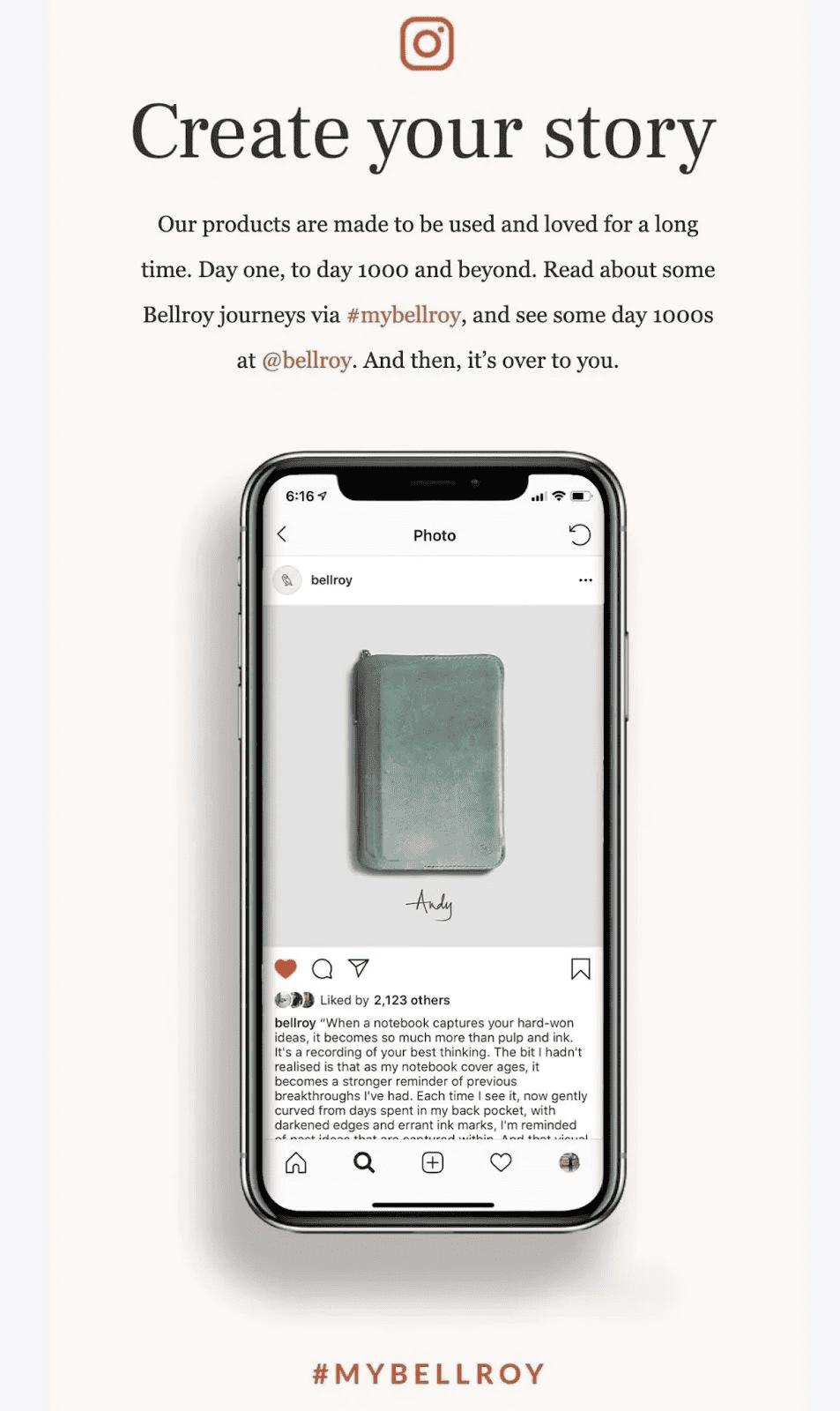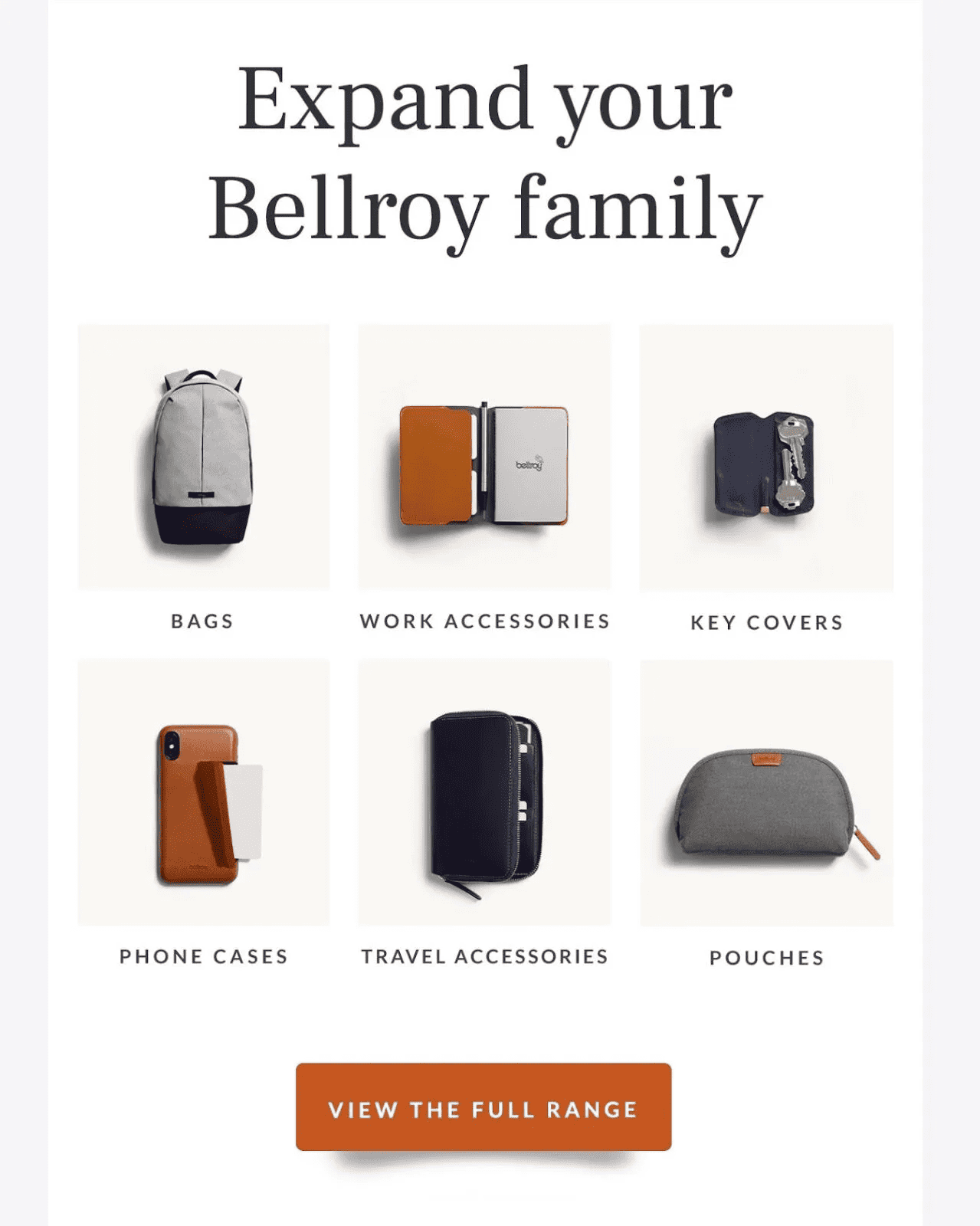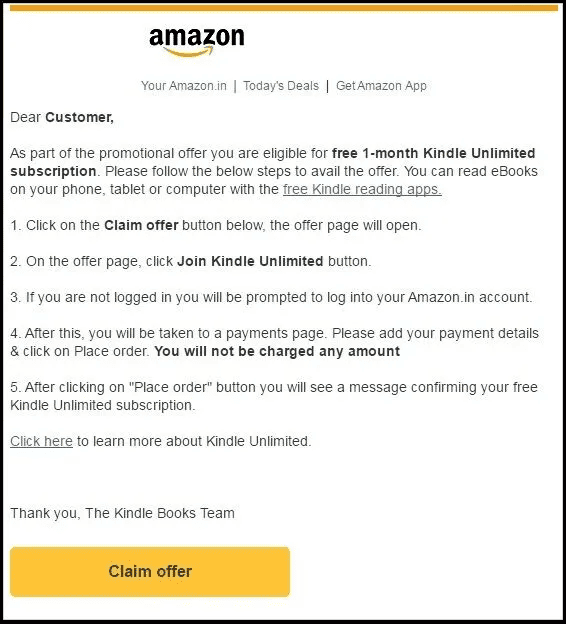Setting up drip campaigns saves you significant time and resources and helps you maximize communication with potential and existing customers.
How?
Drip campaigns enable you to do the following:
- Automate the process of sending targeted emails to your leads
- Nurture leads through your sales funnel based on the actions they take
- Maintain a consistent flow of communication, building authority and customer trust over time
However, setting up drip campaigns that work can be daunting, leaving you wondering how to get the best out of it. In this blog post, I share drip campaign examples from my inbox that can help you transform your email marketing.
If you are also looking to learn about email drip campaigns, then you will find this blog post engaging as it covers:
- What email drip campaigns are
- Why email drip campaigns work
- 12 drip campaign examples that can inspire you
Let’s dive in!
Table of Contents
What Is a Drip Campaign?
A drip campaign is a series of emails automatically sent over time to email subscribers once triggered by a subscriber’s action or when they meet a preset condition.
This is what a drip campaign may look like:
Trigger: A new subscriber signs up
Action:
- Immediately (welcome email)
- After 12 hours (product tour email)
- After 24 hours (customer success story)
- 48 hours (personalized suggestions to make the most of the platform or product)
- 72 hours (recommended services or feedback)
Some drip campaigns could span several hours or days, while some may last for weeks depending on the industry, drip campaign purpose, and business sophistication.
When you sign up for a newsletter, buy a product, or abandon a cart, you become enlisted to receive these emails.
As a business owner or solopreneur, your subscribers usually receive these emails after they take specific actions on your business website or meet a set of conditions, triggering the personalized emails they receive from you.
Here’s what an email trigger on EngageBay looks like:
How Many Emails Should You Include in a Drip Campaign?
There’s no fixed rule for the number of emails in a drip campaign, but most campaigns include anywhere between four and eleven emails sent a few days apart from each other.
The ideal number depends on the type and purpose of the campaign.
For example, a lead nurturing drip campaign might include multiple weekly emails, while a welcome email campaign may have more days between each email.
|
Drip Campaign Type |
Duration | Email Count |
Objective |
| Welcome Series | 1 week | 3-5 | Introduce new subscribers to your brand and products. |
| Abandoned Cart | 3 days | 2-3 | Encourage shoppers to complete their purchases. |
| Win-Back Campaign | 3 months | 6-8 | Re-engage inactive customers and reignite interest. |
| Seasonal Promotions | 2 weeks | 3-4 | Showcase limited-time offers for holidays or events. |
| Loyalty Program | Ongoing (monthly) | 4-5 | Reward loyal customers with special perks and discounts. |
Reasons Why Your Business Needs Drip Campaigns
Drip campaigns are essential for several reasons. Here are a few.
#1. Increasing your brand awareness
89% of marketers say that brand awareness is their top marketing goal. This statistic doesn’t come as a surprise because brands and agencies have learned that consumers will only buy from brands they trust. By setting up drip campaigns, subscribers learn more about your brand through personalized interactions.
#2. Humanizing your brand
You want to avoid coming off as robotic to your customers. Using the brick-and-mortar method of sending generic email broadcasts to all your email subscribers not only gives customers a wrong impression about your brand but reduces subscribers’ engagement and open rates, harming your sender reputation over time.
Rather than filling your emails with industry jargon, generic emails, and an endless pool of what your clients need to do at once, drip campaigns enable you to take customers on a progressive journey, providing personalized help and support as they journey.
#3. Nurturing your leads
Nurturing potential clients is like tending the seeds in your garden over time so they bloom.
Using this above instance, say you successfully attract leads to subscribe to your email list. The journey doesn’t end there. You need your “seed” nurturing tool (email drips) to nurture them, taking them through your email funnel from leads to paying customers.
#4. Increasing your sales
Imagine signing up for a free trial on a new platform and receiving no instructions or support from the team on what to do next and how to do it. Chances are excellent you’d remain on the signup stage without ever becoming a paying customer.
According to Marketsplash, businesses that use drip campaigns experience at least a 10% increase in sales. Another reason drip campaigns are super important in boosting your email marketing results.
What Makes Drip Campaigns Successful?
If you aim to have a successful drip campaign that solves the pain point of customers, your campaign should have the following:
- Clear goals that show the purpose of the drip campaign you are setting up. Your clear goal could be showing clients how to make the most of your services, upgrading their payment plan, or enabling a seamless customer experience.
- Personalized content that speaks directly to the targeted subscribers.
- Relevant, engaging content that will not bore the customers but contains answers to their needs.
- A clear call-to-action that prompts them to take specific actions after reading your email.
- Responsive and beautiful email design that enhances user experience and readability.
Types of Email Drip Campaigns
The drip campaign examples I have shared in this blog post come from several email categories. Your decision to use any particular type depends on the customer segment you are sending to and customer action. Here are the different types of email drip campaigns.
1. Welcome email drip campaign
You know you’ve got to welcome visitors whenever they show up at your doorstep, and the first impression you make matters a lot. The same is necessary when new customers show up in your email list.
Sending a welcome email is a good start to building long-term relationships with your email contacts, and what better way to start than a welcome drip campaign?
This is what a typical welcome email drip campaign sequence looks like:
2. Onboarding email drip campaign
After the “Welcome to my brand” email, the next thing is to show your visitors around for a while. What you are doing now is getting them familiar with your brand – the things you do. Onboarding emails help to introduce your company, newsletter, agency, brand, or product to customers.
The content of an onboarding drip campaign can include educational content, tutorials, and product demos. If it is a product or service, then the mail will revolve around the initial setup and usage of the product.
This is an onboarding drip email campaign from Mailmodo:
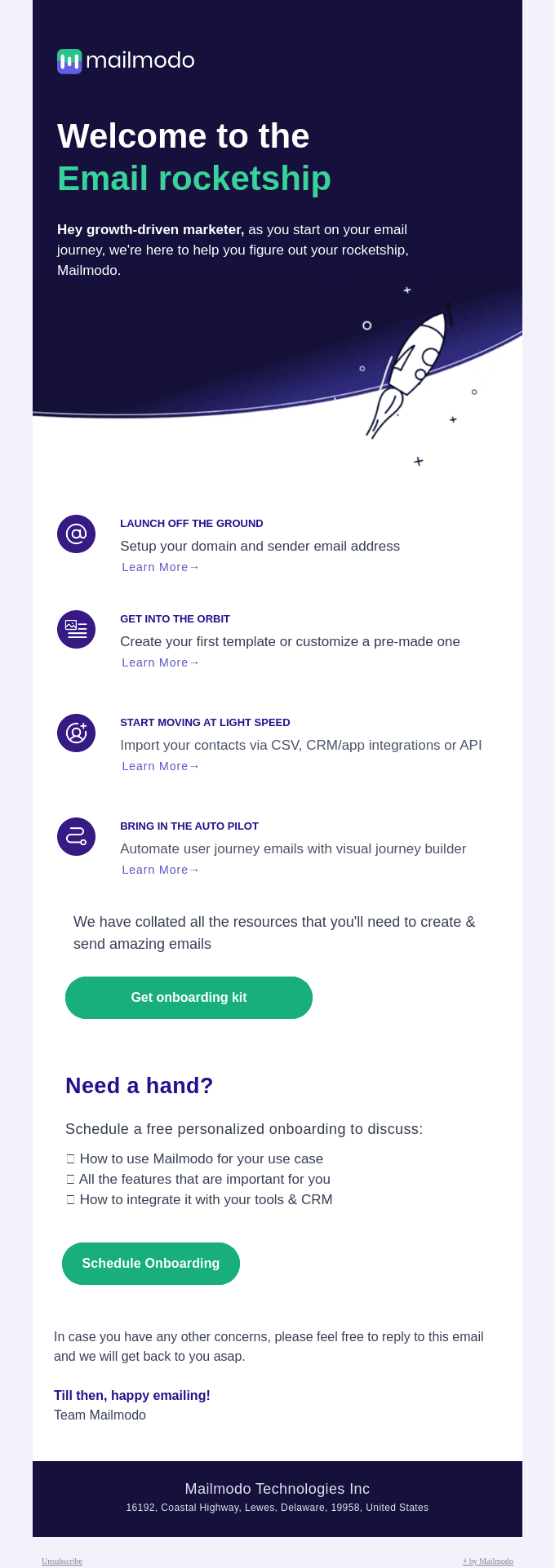
#3. Lead nurturing drip campaign
Lead nurturing, as always, has to do with nurturing potential clients into becoming actual customers. It is getting a visitor to feel at home in your base. As a brand or business individual, you know the value of your business, and you want people to see and interact with your services.
Not everyone will buy your product after welcoming and onboarding them. This email campaign, therefore, ensures you maintain communication with prospects and provide value over time.
The content of a lead nurturing campaign can be informational, product demonstrations, or existing customer testimonials on how valuable your product is.
#4. Abandoned cart drip campaign
An abandoned cart drip campaign becomes necessary when your visitor gets engaged with a particular feature, product, or service and leaves without completing the purchase.
Cart abandonments are expected, and according to statistics, nearly 88% of online shopping carts are abandoned before the customer completes a sale.
Check this abandoned cart email from McDonald’s:

#5. Re-engagement drip campaign
A re-engagement drip campaign is implemented when you have subscribers in your email list who have, over a while, been inactive. Users can change emails or lose interest in your brand.
It happens all the time, and you will need to know so that you can work towards re-engaging your customers.
A typical re-engagement drip campaign workflow:
12 Email Drip Campaign Examples to Steal and Why
Here are some email drip campaign examples you can steal to revamp your email marketing game.
1. Motley Fool discount drip campaign
Motley Fool is a private investing and financial advice company. I signed up for the Motley Fool email newsletter to get updates on their recommended monthly stock picks. To access that, I had to upgrade to their community membership.
To incentivize me and other customers like me to make the purchase, the Motley Fool sent a 3-part email drip marketing campaign offering a 90% discount fee to celebrate Independence Day.
This email works because it is straightforward and includes a button to show me the offer details.
Approximately 7 hours later, the Motley Fool sends me a reminder email. This time, it includes more about the offer. What I loved most about this second email is its emotional appeal: “As the fireworks blast off tonight and paint the sky tonight, think about igniting your own financial future too.”
Motley Fool sends this final email about 24 hours after sending the first email in this discount sequence.
I like that this drip campaign is short and not overstretched, with the primary goal of closing more sales through their discount promo in celebration of Independence Day. This email served as the final call to those who may not have seen the previous emails and a reminder to those who have yet to take action.
Create Your Own Discount Email Campaigns on EngageBay
2. Wattpad educational emails
One of the best ways to build good customer relationships is by sharing educational materials. Yes, it works 99%. Educational drip campaigns contain how-to instructions, articles, tips, and advice on how to solve typical problems.
Every time Wattpad sends an email, there is something to learn. You can check it out for yourself, too.
Since it involves writing, their educational email campaigns are usually about grammar, writing tips, and lectures about storytelling. And because Wattpad is one of the best in its niche, users will fancy whatever comes from them. Take a look at the mail below:
Have you now figured out why it’s on this list? Is anything catchy? Yes.
Aside from the colorful nature of the mail in adherence to the company’s brand, the mail starts with a problem statement that affects most writers on the platform. Who wouldn’t want to read a mail that has a solution or clarifies their problem?
Five days later, Wattpad follows up with another educational content on ‘Hooks.’ Check it out below.
Why should you steal from the Wattpad educational series? Because it’s awesome, for the following reasons:
- It is personalized to its subscriber’s pain point and has a catchy beginning.
- The email design is beautiful, and the content is streamlined. Also, the choice of background color and contrasting font used in Wattpad emails is excellent.
- According to research, customers will likely buy from a company whose educational content they read. The point here is to send content that resonates with your audience.
- Wattpad doesn’t spam me or other subscribers with emails every other day. But the emails are well-spaced and straight to the point.
Try to replicate Wattpad’s educational campaign to build brand trust and authority.
Create Your Own Educational Email Campaigns on EngageBay
3. Audible’s welcome drip campaign
The third example on this list is Audible. The online audiobook and podcast service is a subsidiary of Amazon. My friend Micheal signed up on Audible Plus months ago because he was a book reviewer at the time and had to get books from Audible.
After signing up via the form, he got a welcome email. Now, let’s look at what a welcome email should look like and why you should “steal like an artist” from Audible.
The first thing to consider about the mail is its personalization. Personalizing the email made it more intentional and heart-warming. The email also walks you through the steps to complete the setup phase in a snapshot.
Two days later, he received another email about his free preview playlist. The “Dig in” link here was the key to interacting with the wide range of content and voices in one place, which was a big deal as a newbie on Audible.
Twenty-four hours later, they finish this email sequence with an offer to create a personalized listening experience by signing up for the Plus catalog.
You can steal a thing or two from Audible’s welcome drip campaign. First, Audible allows users to visually track the steps required to set up their account and the milestones they have completed. Second, they streamlined the entire process and made it easy for newbies to see where they could start by including a preview list.
Finally, Audible kept its email design simple and maintained its brand color throughout this sequence.
Create Your Own Welcome Email Campaigns on EngageBay
4. Winona’s onboarding drip email campaign series
Winona is a wellness brand dedicated to helping women with their health. It employs a welcome/onboarding email series to nurture new members.
The first email welcomes and thanks the reader for taking a significant step by ‘reaching out to Winona.’ The first email also offers a call CTA to facilitate easy scheduling with their healthcare professionals.

Subsequent emails provide additional educational content, encouraging women to prioritize their well-being and explore Winona’s solutions.
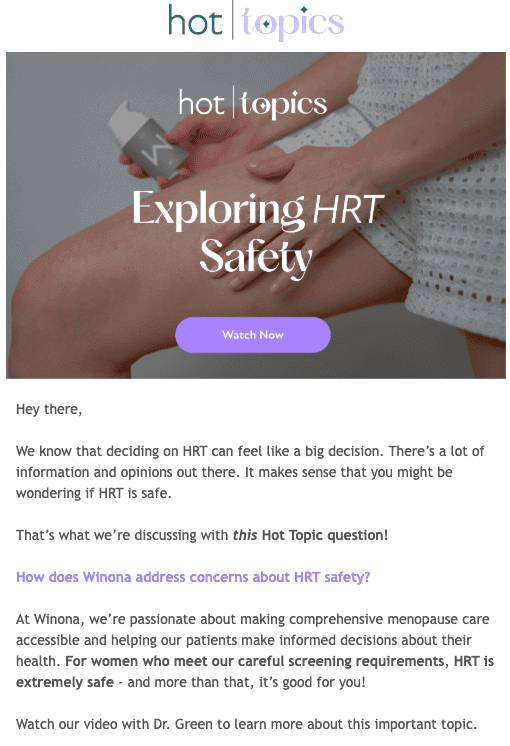
5. DuckDice’s seasonal promotions campaign
When a particular season is fast approaching, some businesses strategically work with the air around the season to facilitate an increase in their sales. For a cryptocurrency operation like DuckDice, promoting products during seasonal events implies they start their campaigns early to achieve their goals.
FIFA 2022 bonus? Who wouldn’t want to delve in and make the most out of this bonus during the World Cup period?
From the email, you can tell that it is time-bound. Another thing to note is the fancy mail design in tune with the season. Looking at the example above, you can see it looks warm, displays elements of Christmas, and shows the possibility of winning prizes for all who participate.
Next, DuckDice sends another email.
Christmas is a season of light, gifts, Christmas trees, and belly-deep laughter. DuckDice captures that perfectly in this drip campaign example. If you engage with your audience in a particular season like DuckDice, come in the spirit of the season.
Let your content be straightforward and in tune with that season.
Create Your Own Seasonal Email Campaigns on EngageBay
6. Grammarly’s user engagement campaign
When a client or customer signs up for your service, you usher them in with your arms wide open. As time passes, you keep tabs on them because their engagement implies profit for you.
An engagement marketing campaign is a great way to up your customer health score. It is also a great way to keep customers from falling off the grid and maintain active communication with you.
Grammarly does well with its engagement email drip campaign. Let us take a look.
Here, you can see Grammarly educating subscribers about the benefits of downloading a web version. In another email five days later, Grammarly offers a 40% off to upgrade to the premium package. That’s a big discount!
This type of huge promo will make your customers want to try out the offer you share with them.
Most importantly, Grammarly sends regular updates to show users their productivity level. Comparing their performance with other users’ performance is a brilliant way to drive them to action. Because users want their next report card to improve, they want to do more with Grammarly. This further increases engagement.
7. Audible’s cross-selling drip campaign
After a customer makes a purchase, what happens next? Well, business continues. It does not stop after you have sent a ‘Thank You’ email to thank the customer for their purchase.
Cross-selling and upselling are great ways to drive repeat purchases and keep your email subscribers engaged. Let’s take a look at Audible’s cross-selling drip campaign example.
Product recommendation! Audible is smart enough to recommend what falls within the same genre as the previous purchase, all thanks to marketing automation.
With marketing automation software like EngageBay, you can easily track customers’ past purchases and interactions across multiple platforms to personalize your offers.
There is a high chance that the customer will make another purchase within the same genre, which is a plus for Audible.
Audible’s email signature is good; they don’t just sign off with a name. They also attached a face to the name. This is an excellent way to humanize your brand further.
Next, Audible sends an email to purchase a 3-credit bundle so I can save more (a 20% save is a big deal for any financially savvy client). If you want to engage with or run a cross-selling campaign for your business, you should learn something from Audible.
8. Netflix’s promotional drip campaigns
Netflix, renowned for its viral and engaging marketing strategies, marked its 26th anniversary with a sitewide discount on merchandise.
The campaign commenced with an initial announcement at the start of the sale.
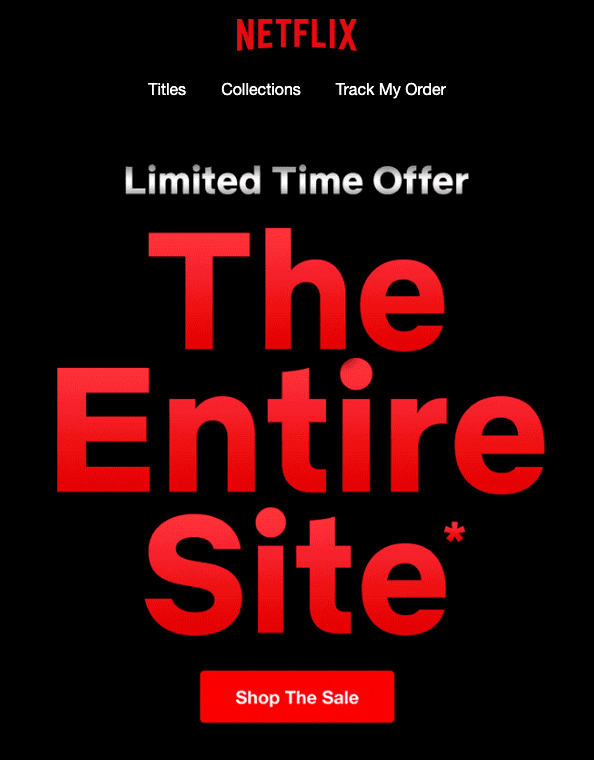
Following the initial announcement, Netflix sent a series of reminder emails to encourage subscribers to explore and purchase their favorite merchandise during the sale period.
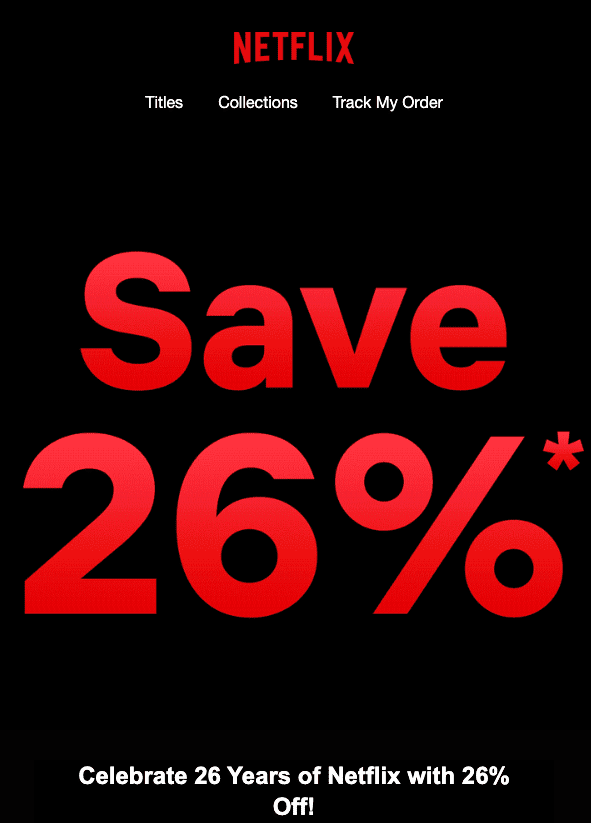
Create Your Own Promotional Email Campaigns on EngageBay
9. Netflix’s win-back drip email campaigns
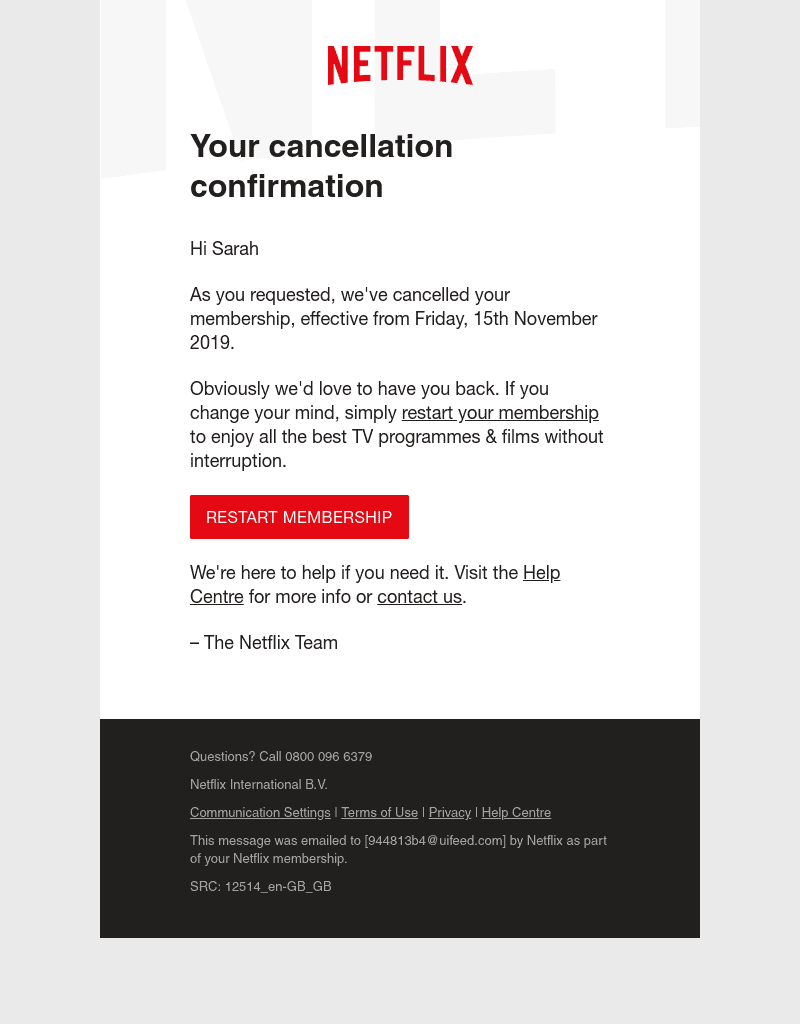
Netflix employs a sophisticated win-back email campaign to re-engage with users who have canceled their subscriptions.
Upon cancellation, Netflix’s automation workflow ‘triggers’ a drip campaign tailored to the user’s viewing history.
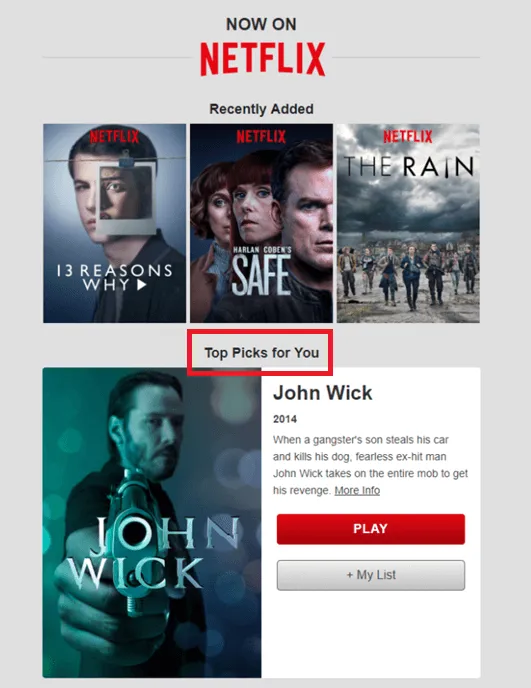
The movies and shows highlighted in the emails align with the user’s preferences to entice users back to the platform.
The campaign ends with an impactful email, reminding readers of Netflix’s key benefits:
“😥 Sarah, give us another chance? We’ve got thousands of new TV programmes and films.”
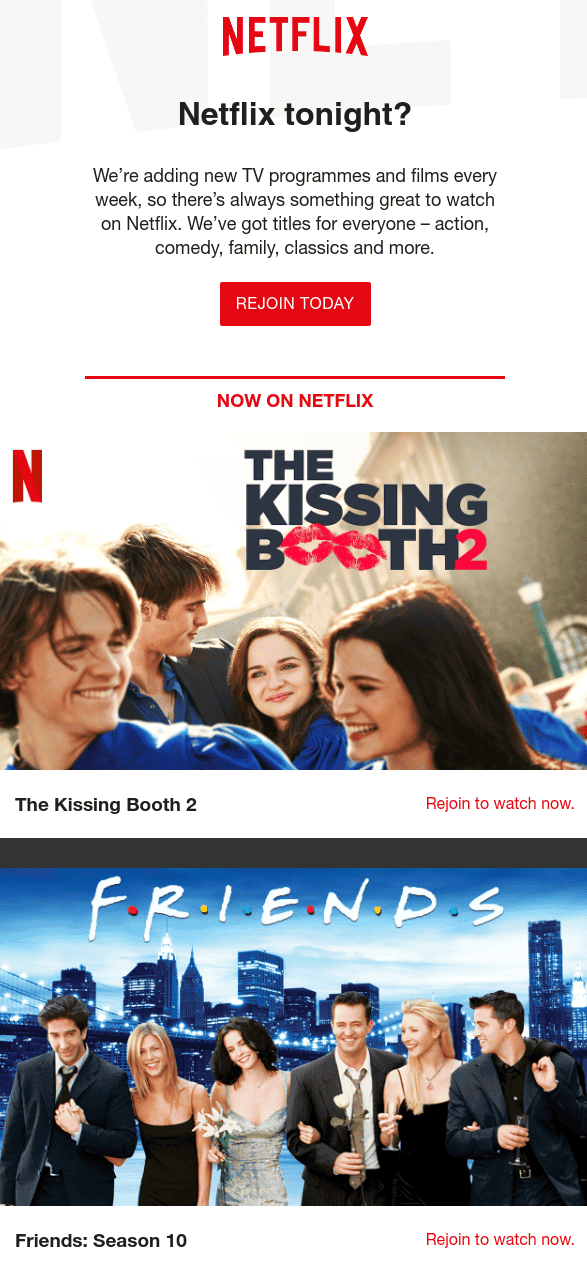
10. Jumia’s limited offer campaign
A limited-time offer is arguably the most used marketing strategy. You can wake up one day to see the price of a particular commodity on your favorite eCommerce store, which has been slashed down to half its original price.
You know how effective these emails are because you quickly jump on the offer (especially if it’s a product you have had your eyes on for a while).
Jumia’s Black Friday drip campaign is a perfect example.
Having its Black Friday promo around November is quite strategic (in preparation for Christmas sales).
The first email of the sequence is a reminder to its subscribers that the sale will begin by midnight on the first Friday of November.
What do you think it does to Jumia’s subscribers? It keeps them on their toes in expectation.
Jumia sends another email to remind customers about the promo starting at midnight, and this time, it includes some products with their new slashed prices to let the discount sink into customers’ minds.
This drip campaign works for several reasons:
- The inclusion of products with their original and promo price
- The first email was sent three days before the promo start date, so customers had three days to prepare for the promo.
- The email has a clear offer and a start and end date, so subscribers know what to expect.
11. Figma’s onboarding drip campaign
When you sign up for software or a tool you want to use for your productivity, you tour the tool for a feel of what it can do and its features that can help you with your work.
You can walk around the whole details by yourself. However, there is greater pleasure and less stress if the software company sends you emails that walk you through the tool’s features and how to make the most of it.
Heard of Figma? It is famous for designers, product managers, and other creatives.
When you sign up on Figma, you start receiving automated emails.
Why? Your sign-up triggered it. These emails being sent to you align with what Figma offers. The Drip campaign begins with an email verification (for double opt-in). This is important to ensure a lead didn’t accidentally sign up and reduce the spam risk.
Next, Figma sends a welcome email with features to look forward to and a CTA that says, “Get started.” Using a black background and bright colors for designs gives the email a beautiful contrast.
Figma includes the next steps to take and a CTA button to get started. Additionally, Figma shares other options the new subscriber can take.
They can explore their blog for best practices, join Figma’s weekly free demo, or collaborate on a project with their team.
12. AliExpress’s win-back campaign
The popular online marketplace AliExpress does their win-back campaign like pros. One minute, your customer is happy to do business with you, and the next second, they leave.
There are different reasons why someone who signed up for your product or service will suddenly leave.
It could be because they found something better, lost interest, or do not need your services anymore (sometimes, that’s okay). But with a win-back campaign, you are sure to be able to get back the attention of your subscribers.
Let’s take a look at AliExpress’s unique win-back campaign. The first email comes with various products with discount prices and a CTA that says explore to incentivize customers to click on the link.
This increases their click-through rate and means the customers go a step further in the sales funnel.
Three days later, AliExpress goes further to show their official picks, which are in tune with the previous purchases that the customer has made, with discounts to incentivize the client to take action.
After a series of targeted emails, AliExpress delivers a personalized email to show you their recommendations.
These recommendations are based on customers’ behaviors and previous purchases or website clicks, increasing the chances of a repeat purchase. Only a drip campaign can do this.
If you are looking forward to running an effective, simplistic win-back campaign, you can draw inspiration from AliExpress.
13. Kenneth Cole’s abandoned cart campaign
When you visit an eCommerce store and add products to your cart, sometimes you leave the store without completing the purchase. Sometimes, it’s because you got distracted, the checkout process was too long, or the shipping fee was too high.
Whatever the case, leaving a store without completing a purchase is a store’s worst nightmare—literally!
People abandon their carts for different reasons, and according to statistics, 48% abandon theirs because of extra cost. 16% leave because they cannot see or calculate the total cost of the order upfront.
Both percentages total up to 64%. How much is left?
The best way to tackle the issue of cart abandonment is by sending cart abandoners an automated email to remind them. The automated email will nudge them to check out and finalize transaction payments.
The idea behind the cart abandonment campaign is to get your customers to complete their purchase. Here’s an example of a cart abandonment campaign from Kenneth Cole.
The first automated sequence shows the brand giving off a fancy 15% to motivate you as a customer to complete your purchase. However, the offer is valid for 48 hours, after which the 15% off will be revoked.
However, the 15% off doesn’t imply that the customer will show up to check out, so another mail is sent with a 20% off.
With these irresistible incentives, this campaign stands as a great example concerning cart abandonment.
Create Your Own Cart Abandonment Email Campaigns on EngageBay
14. Bellroy’s post-purchase feedback drip campaign
After a client purchases a product from your brand, you can still engage with them and ask for feedback to improve your services.
Let’s look at Bellroy’s post-purchase feedback drip campaign example below.
The email comes 30 days after the purchase, showing that the company has given you time to use the product. Thirty days of usage is enough for you to have information to present as feedback.
After subscribers respond to Bellroy’s feedback email, they are invited to share their experience via social media.
It is a good thing for the brand because the positive experience being shared by customers is an excellent marketing strategy to attract new clients through word-of-mouth advertising.
After this, a final email is sent to the customer in this sequence, inviting them to get more of their products.
Bellroy’s drip campaign is an excellent example of what you should have as a post-purchase campaign.
Create Your Own Feedback Email Campaigns on EngageBay
15. OptinMonster’s cart abandonment drip campaign
OptinMonster employs a cart abandonment email sequence to recover lost sales.
Initially, they send a reminder to users who have left items in their cart, prompting them to complete their purchase.
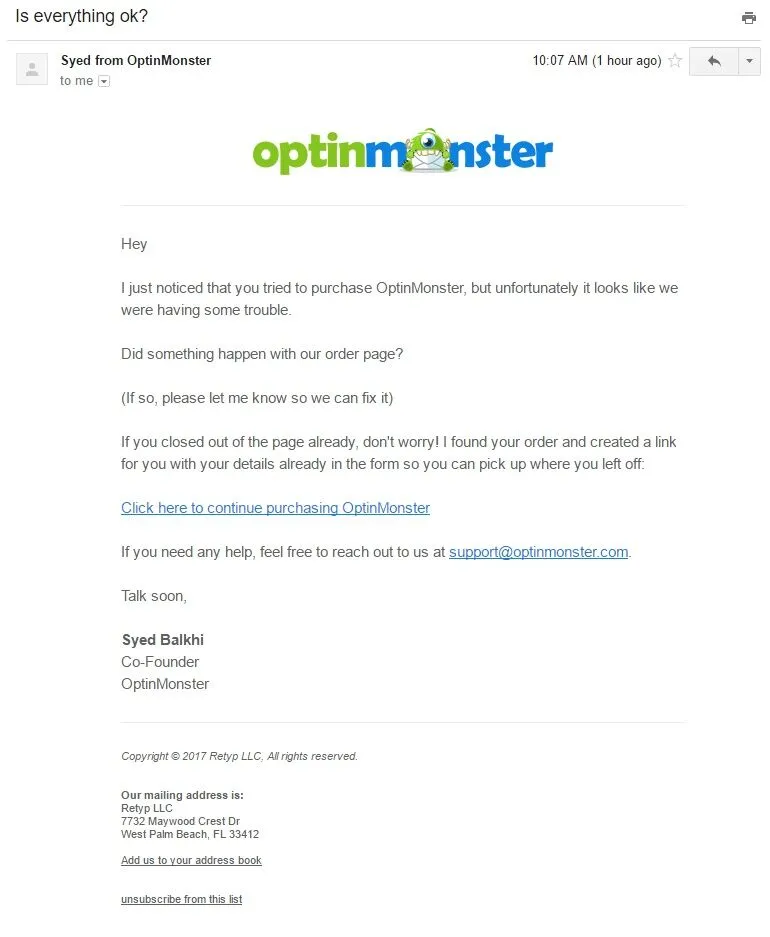
If the user doesn’t act, a follow-up email is dispatched, expressing concern and re-iterating the benefits of the product, accompanied by a clear call-to-action.
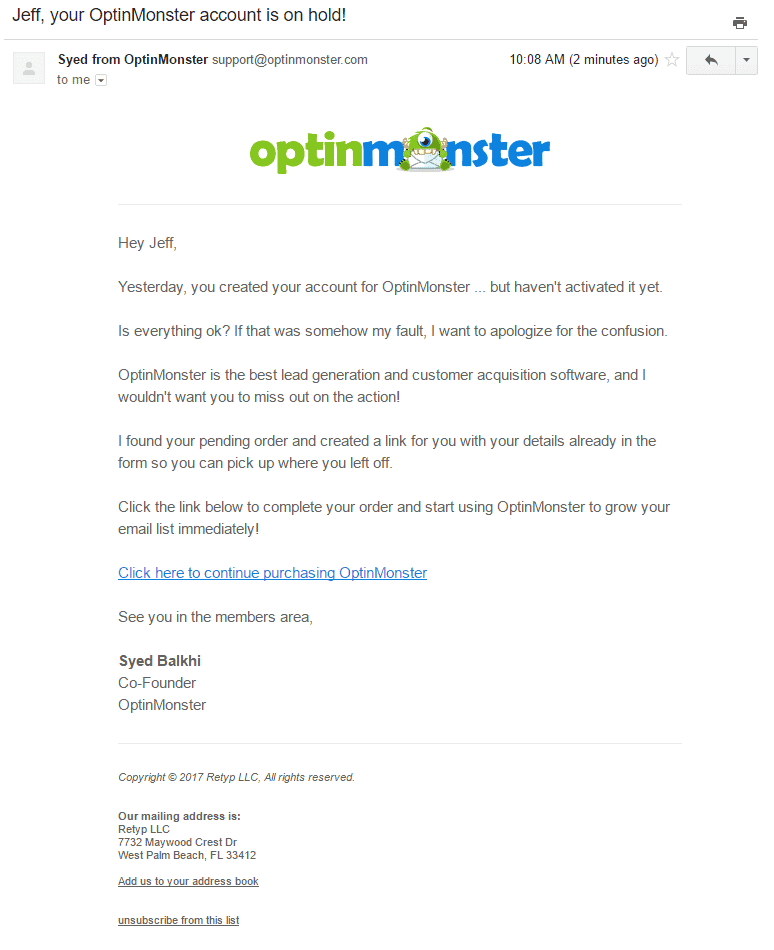
The final email notifies the user of an impending account deletion due to inactivity, often sweetening the deal with a limited-time discount to encourage completion of the purchase.
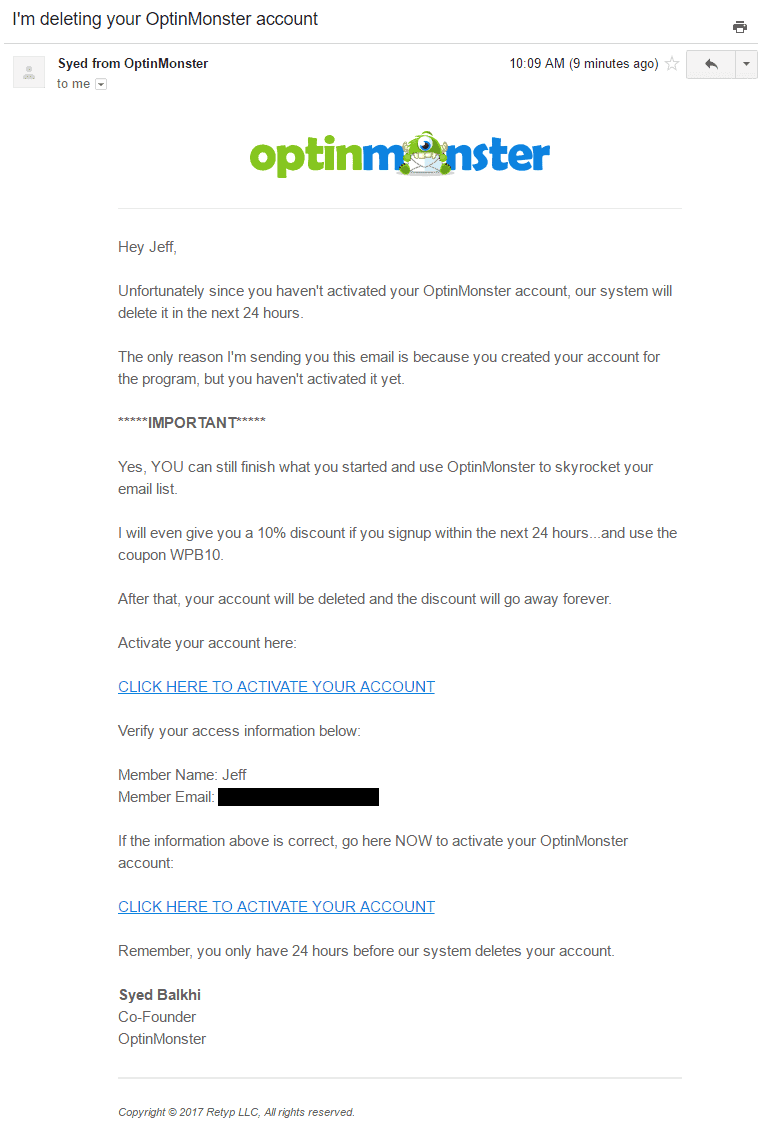
16. Amazon upsell campaign
When you visit an eCommerce store looking to buy a $40 gadget, there is a high chance that you will be shown a $100 device with better features than you want — upselling!
It is more like you are being influenced to spend more than what you’ve planned to. That’s what upselling is – affecting customers to purchase more expensive items and other add-ons to increase the average order value.
In the email below, Amazon gives customers a free 1-month unlimited subscription that enables them to read eBooks on multiple devices to have a taste of it and hopefully subscribe after the free trial.
Amazon sent the email because of the customer’s previous action on the web store: downloading the free content on Amazon’s Kindle. Looking through the email, you will see that Amazon is trying to influence customers to opt for premium content rather than free.
This email can be followed up with benefit highlights, feature comparisons, or customer testimonials.
Drip email campaign best practices
Follow these best practices to improve the effectiveness of your drip email campaigns:
Choose the right drip campaign software
Use a reliable email automation tool that offers all the features you need. The right platform can help you automate your campaigns, personalize your content, and schedule your campaigns for optimal engagement.
Collect key customer information
Encourage your leads to share emails and preferences at the start, whether through registrations, whitepaper downloads, or sign-up incentives. This data lets you send relevant emails that match their interests.
Use clear and focused CTAs
Each email should have a single, compelling CTA. Avoid overwhelming your readers with multiple actions, and instead focus on one goal. This goal can be anything, from making a purchase, signing up for a webinar, or downloading a resource.
Personalize your emails
Generic, mass-sent emails don’t resonate with your audience. Segment your audience based on factors like interests, demographics, user behavior, and demographics. You can use an email marketing software to segment your audience and personalize your messages accordingly.
Send emails at the right time
Monitor your email performance metrics to determine the best sending schedule for different subscriber groups. You can also take a look at our detailed analysis of the best times to send emails.
Measure key performance metrics
Track KPIs, including open rates, click-through rates, conversions, and unsubscribe rates. You can then use the insights gleaned from these metrics to refine future drip email campaigns.
Include these critical campaigns
While there can be various types of drip campaigns for different industries, a handful of campaigns are a ‘must-have’ in your arsenal.
These include welcome emails, abandoned cart campaigns, win-back sequences, upsell/cross-sell campaigns, and re-engagement campaigns.
Best drip email campaign software
Let’s take a look at the top drip email campaign software:
- EngageBay: A cost-effective all-in-one marketing, sales, and customer support software for SMBs. With EngageBay, you get powerful email automation with behavior-based triggers, allowing businesses to send highly relevant drip campaigns. EngageBay also offers advanced segmentation, A/B testing, and dynamic email content to help nurture leads and win back lost customers.
- HubSpot: A robust CRM and marketing automation tool that enables businesses to build personalized drip email sequences. HubSpot also offers a plethora of advanced features to help you send drip campaigns easily.
- Mailchimp: A simple, yet powerful email marketing tool with automation workflows for various campaigns, including welcome sequences, abandoned cart emails, and follow-ups.
Takeaways
It doesn’t matter if your brand is a new startup or you are an expert in email marketing; an email drip campaign is key to success.
We live at a time when communications mean little unless they are personalized to meet customers’ needs and nurture them from leads to paying customers.
Drip campaigns make it possible to automate this entire process.
In this comprehensive blog post, I have shown you 16 email drip campaign examples from top brands and why they work. With the examples given, you can draw insights and create drip campaigns for different purposes.
Some drip campaigns will be short and have only a few emails in the sequence. Others may be longer and span over several days and weeks. While at it, don’t spam your users. A/B test your drip campaigns until you find the best version that works.
Sign up on EngageBay to access hundreds of responsive email templates and automate all your email marketing needs.
Additionally, with its all-in-one marketing, sales, and CRM software, you can streamline all your marketing efforts on a single platform, saving you time and money, and increasing your operational efficiency.
If you’d like to know what others think of EngageBay, check out the user reviews on Capterra.
Updated for freshness, SEO, and substance by Abdul Bashid.
